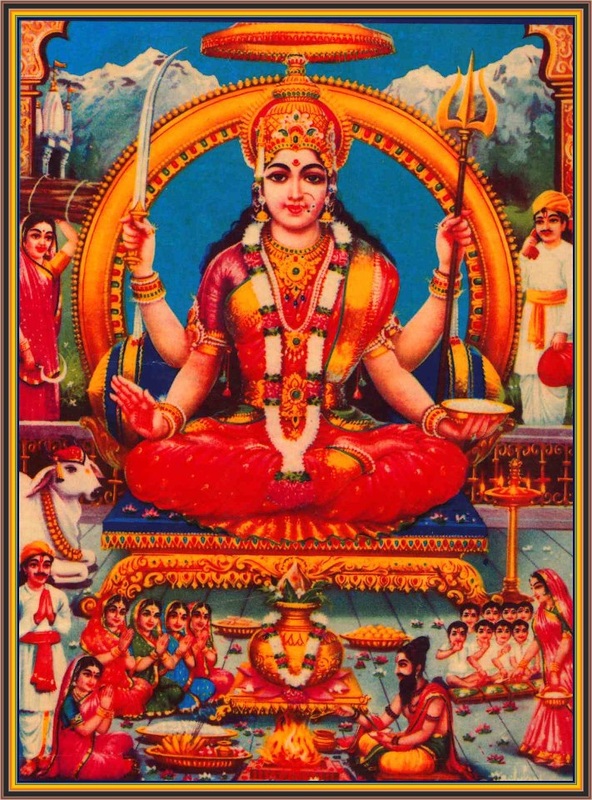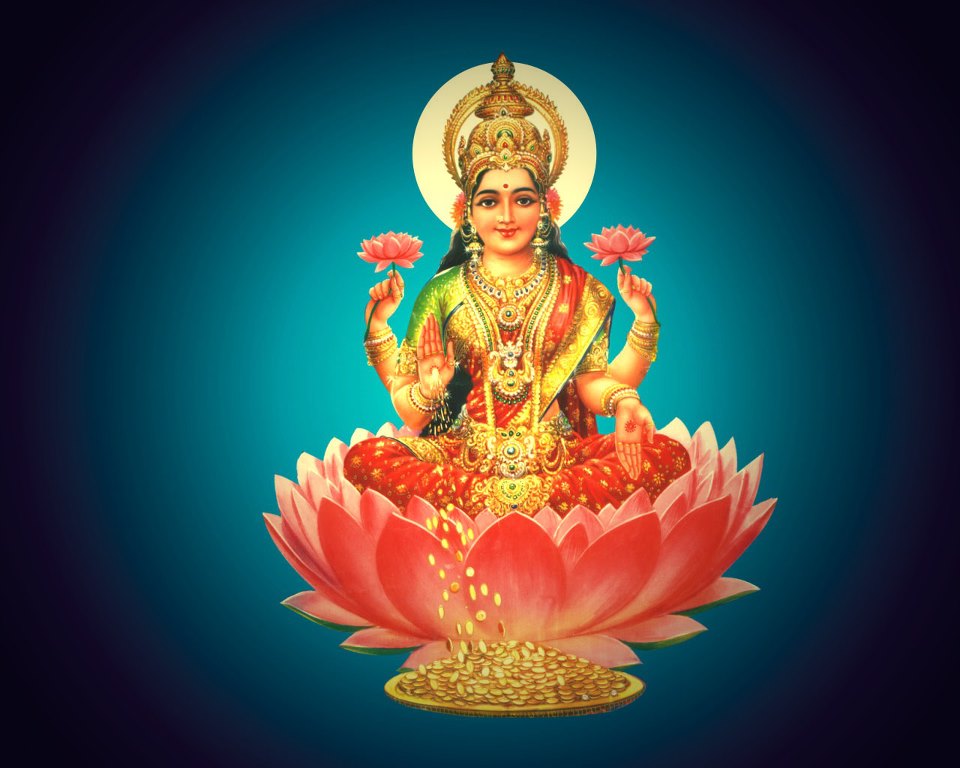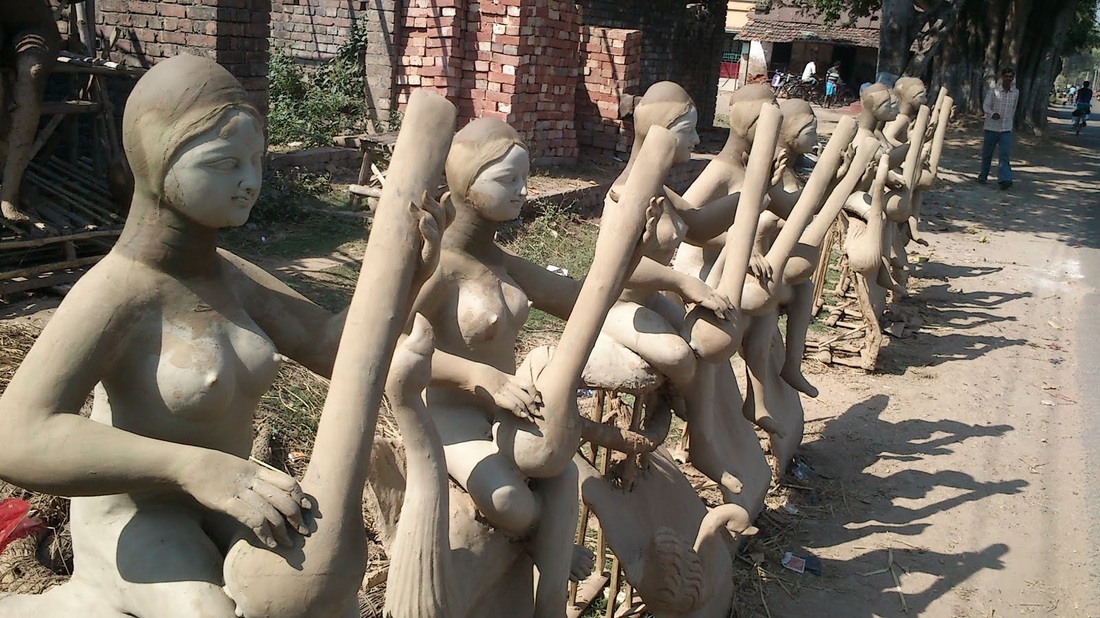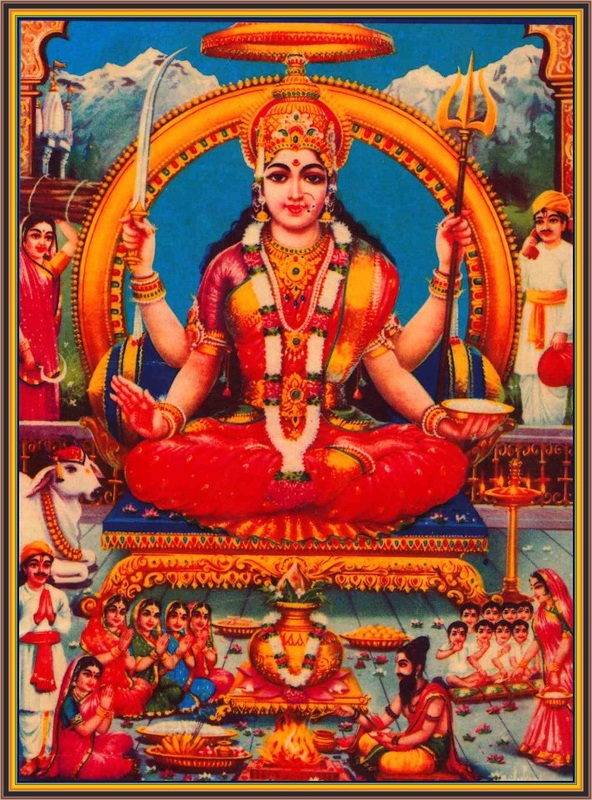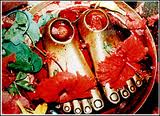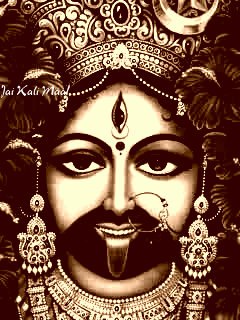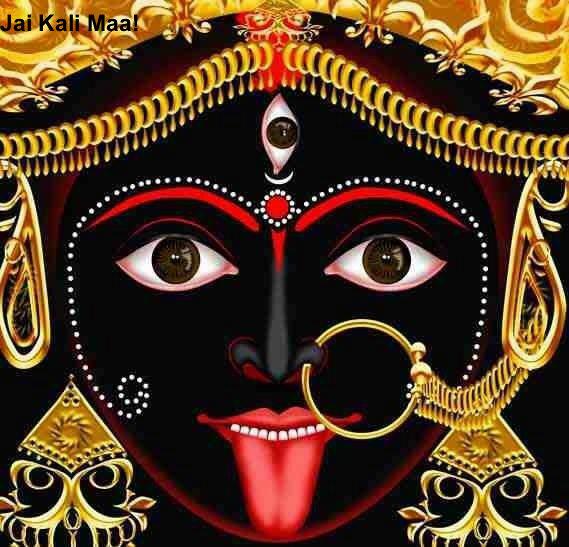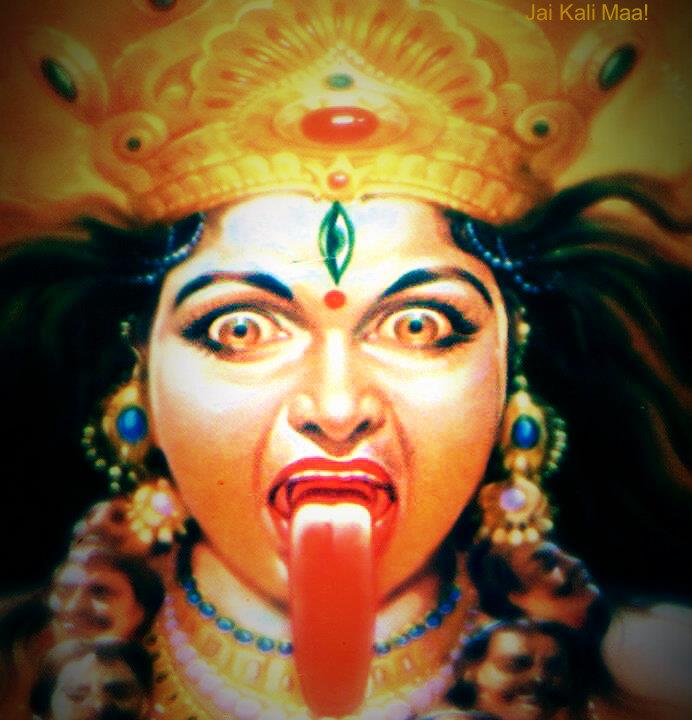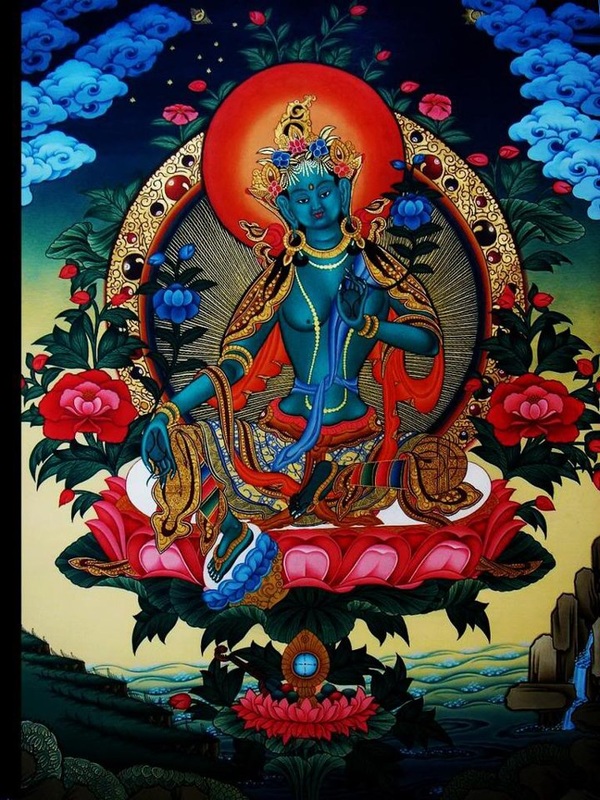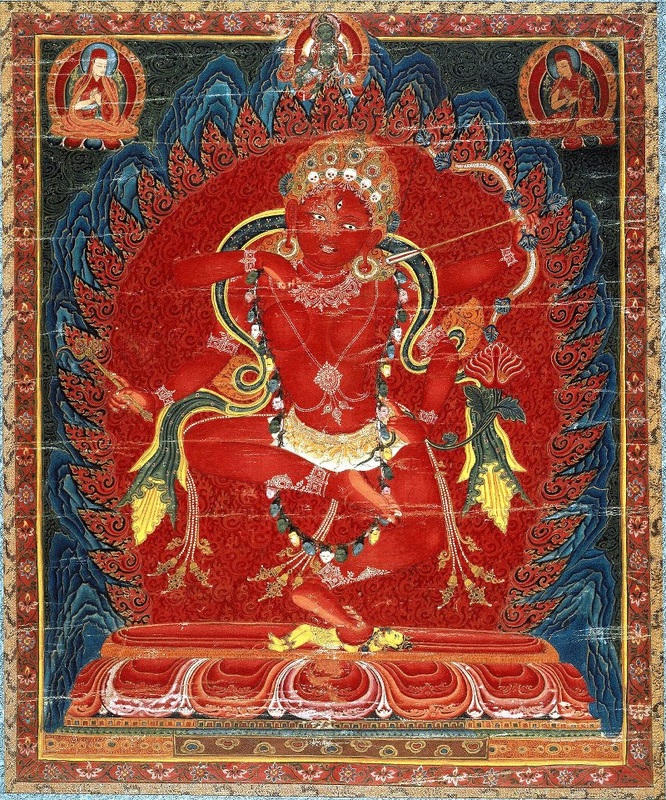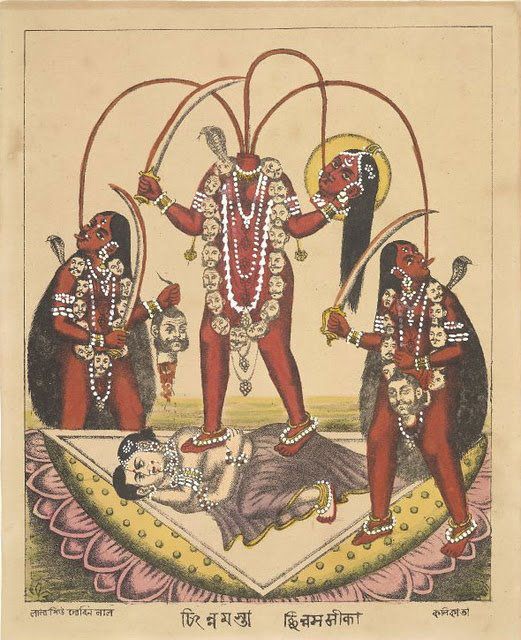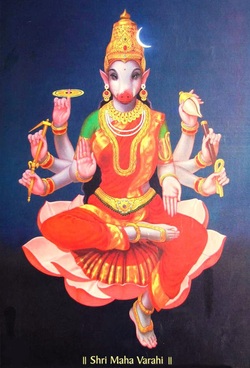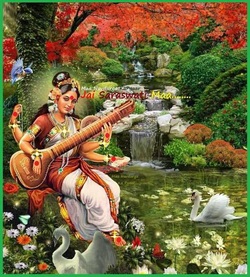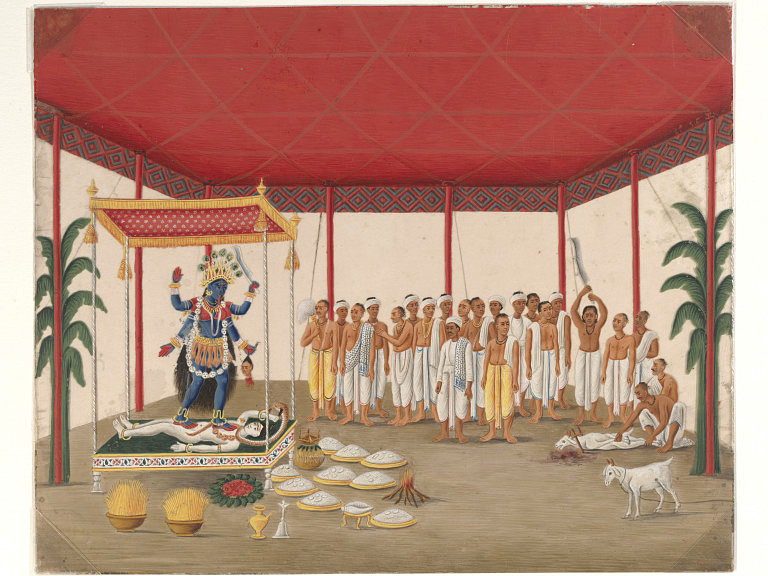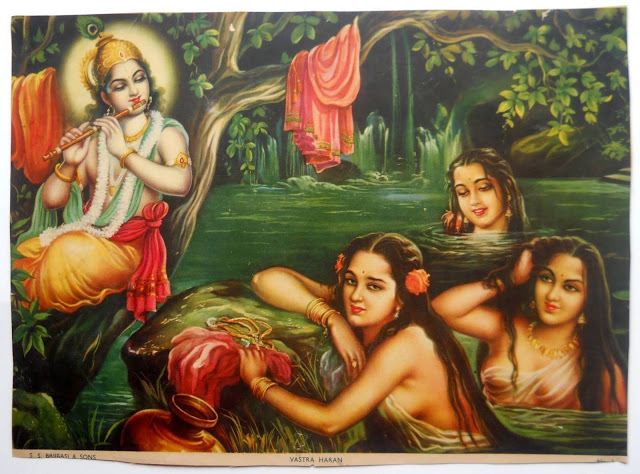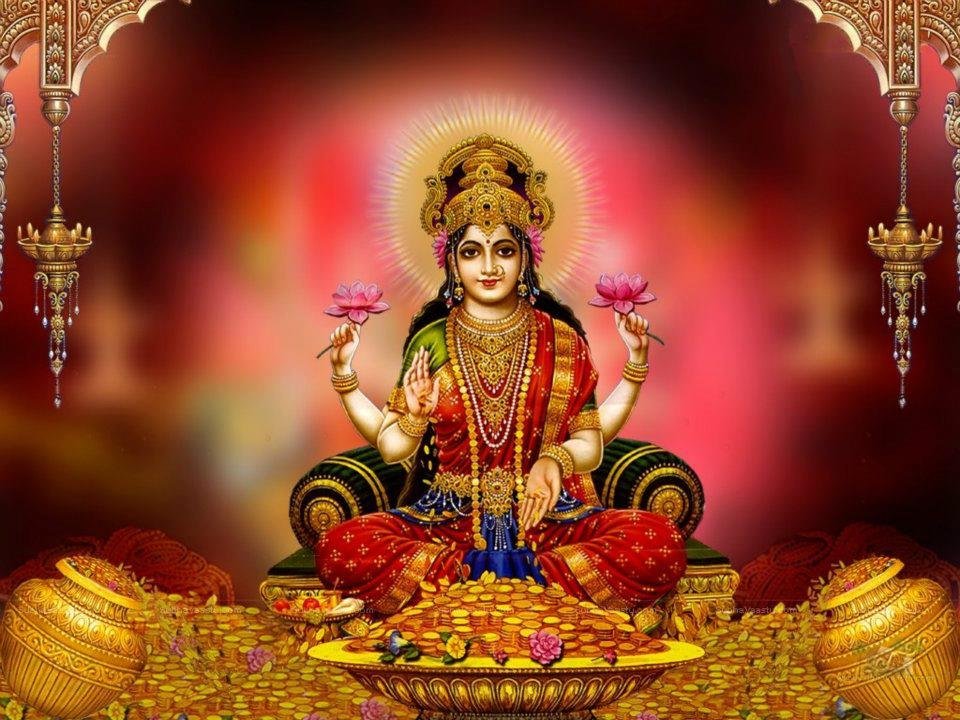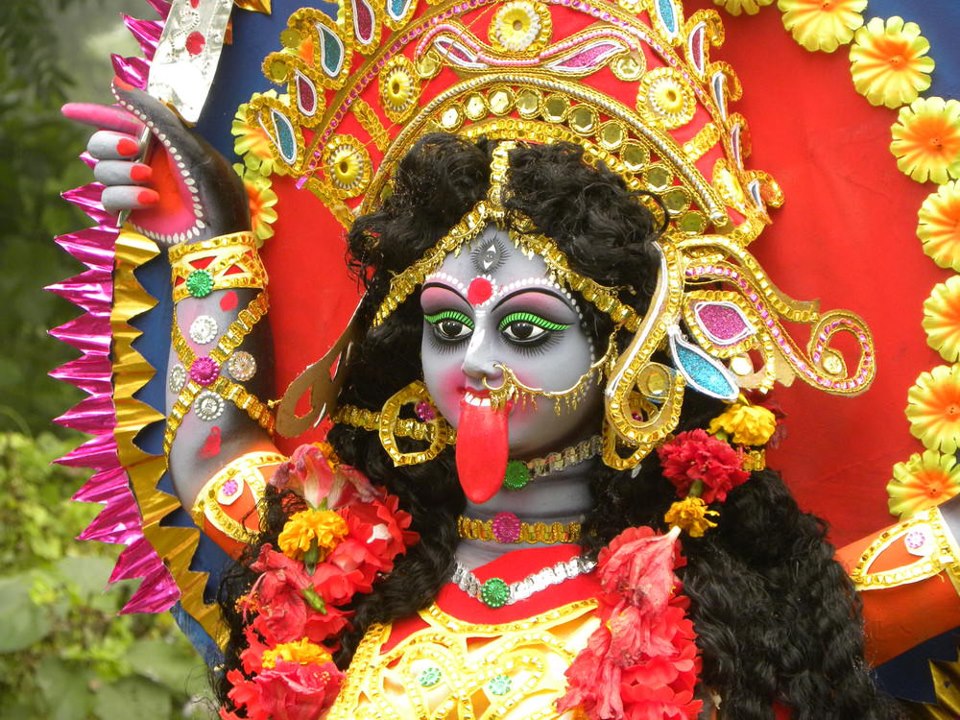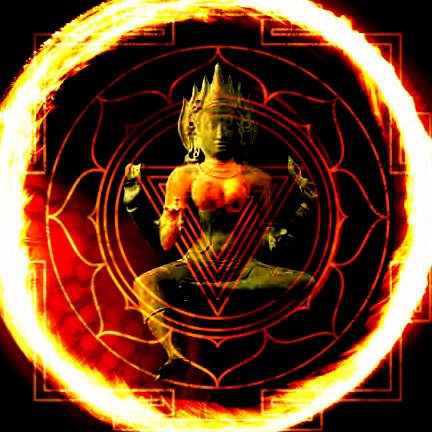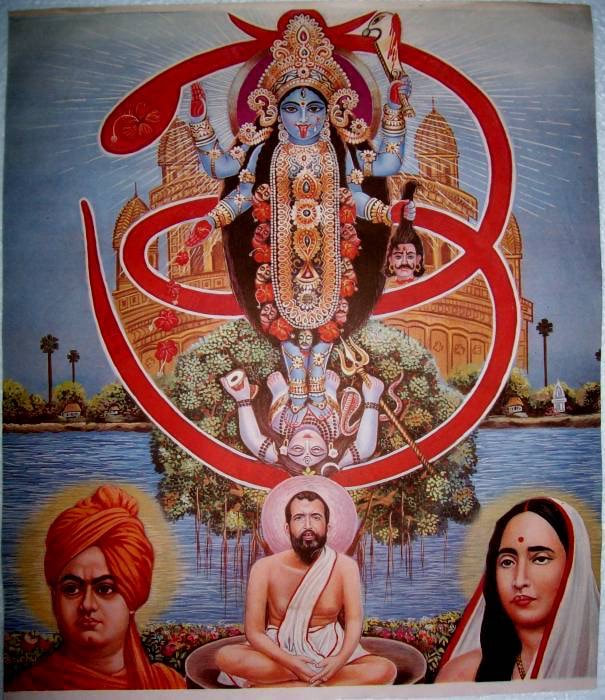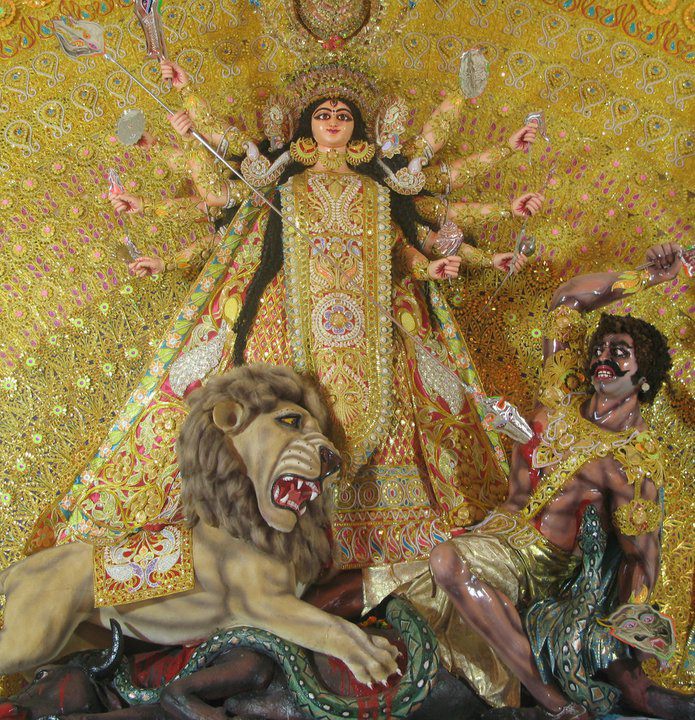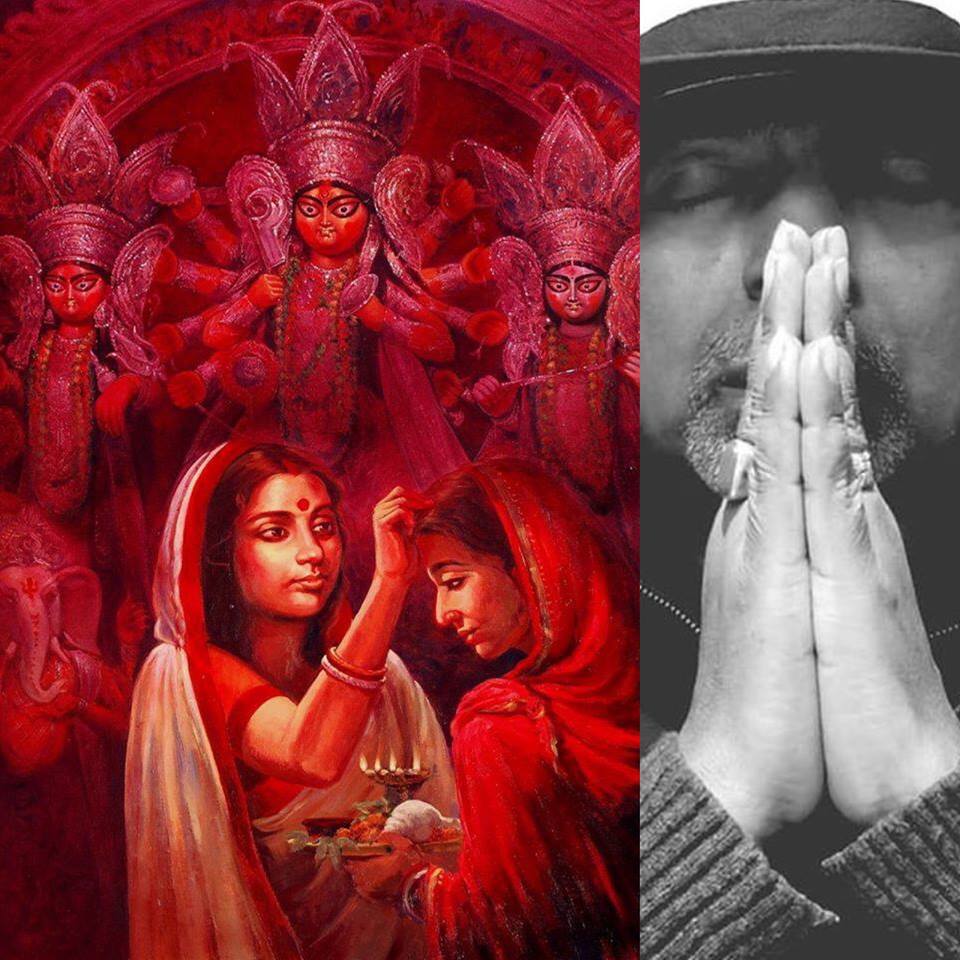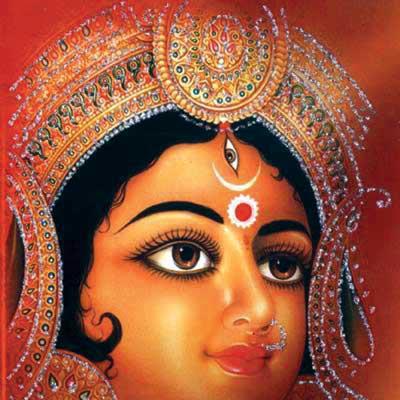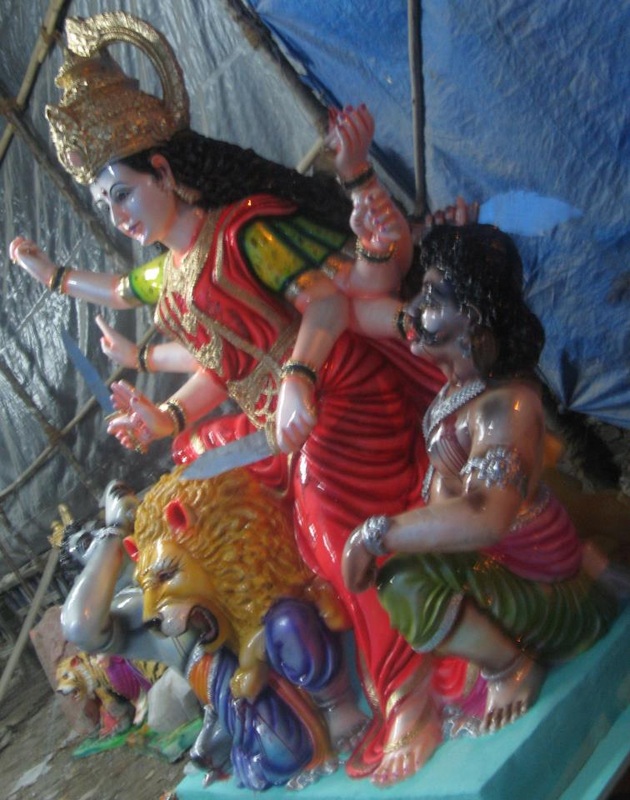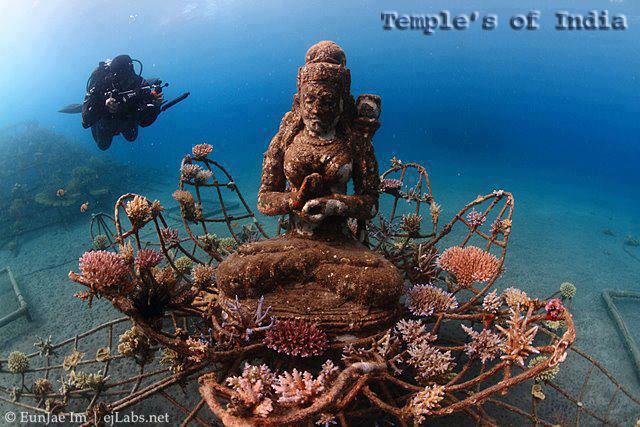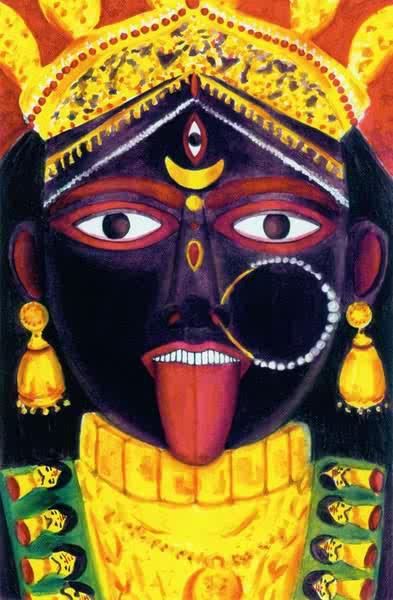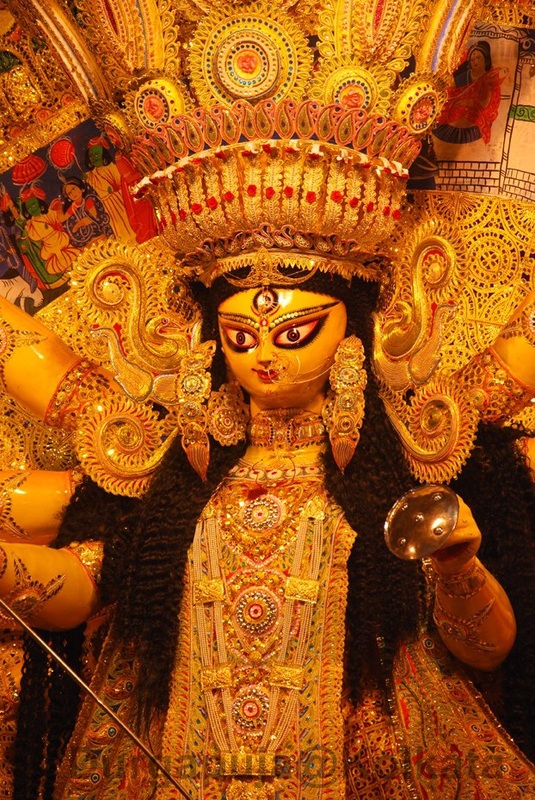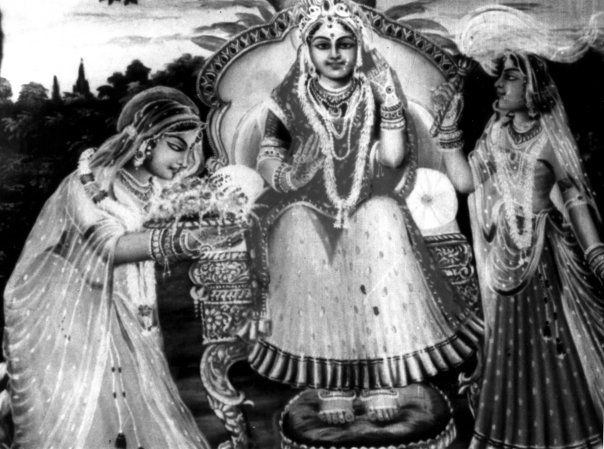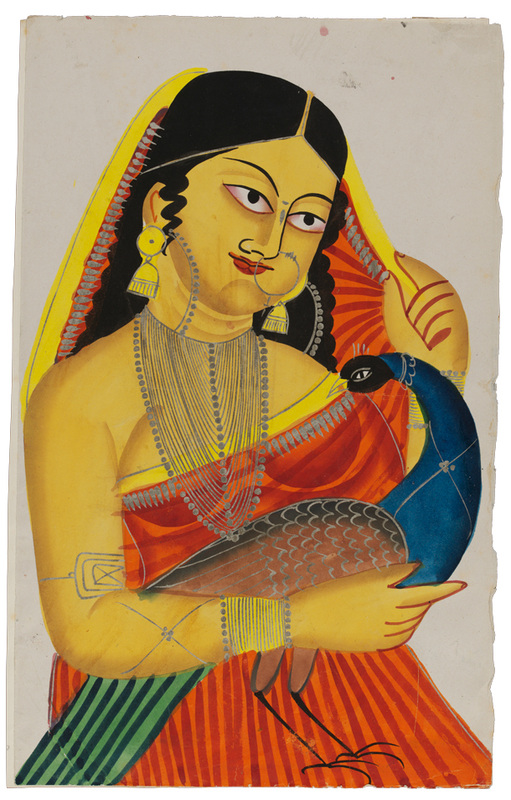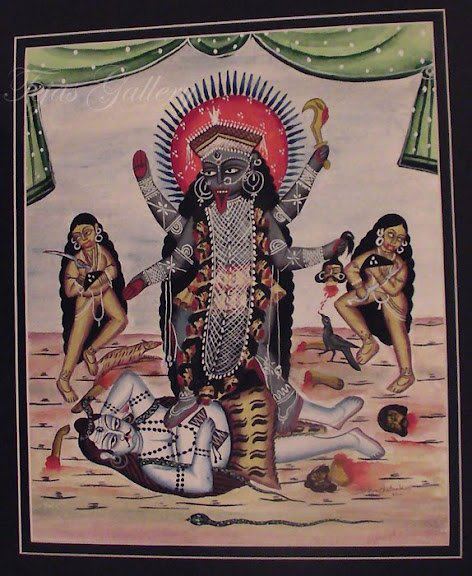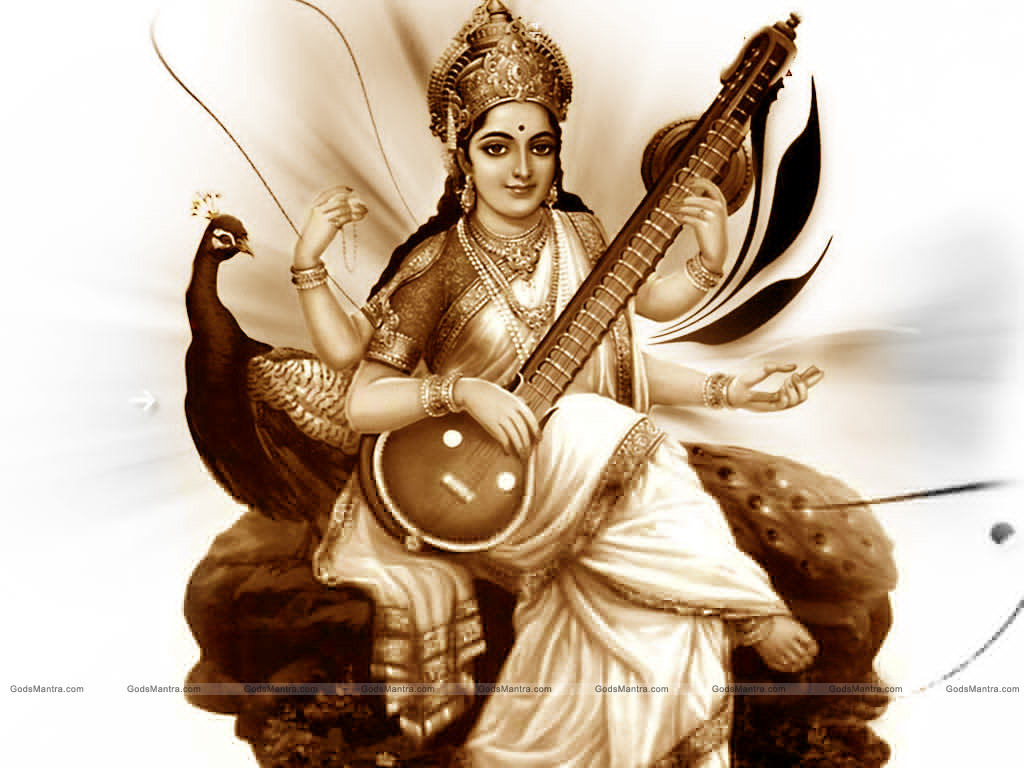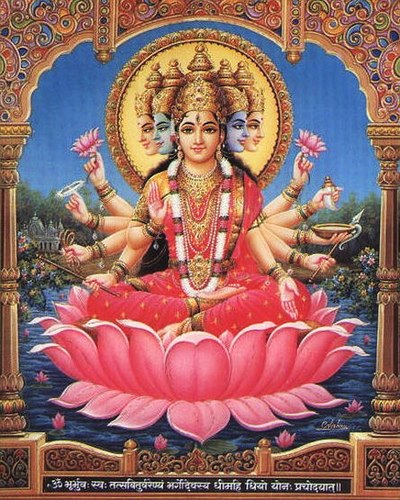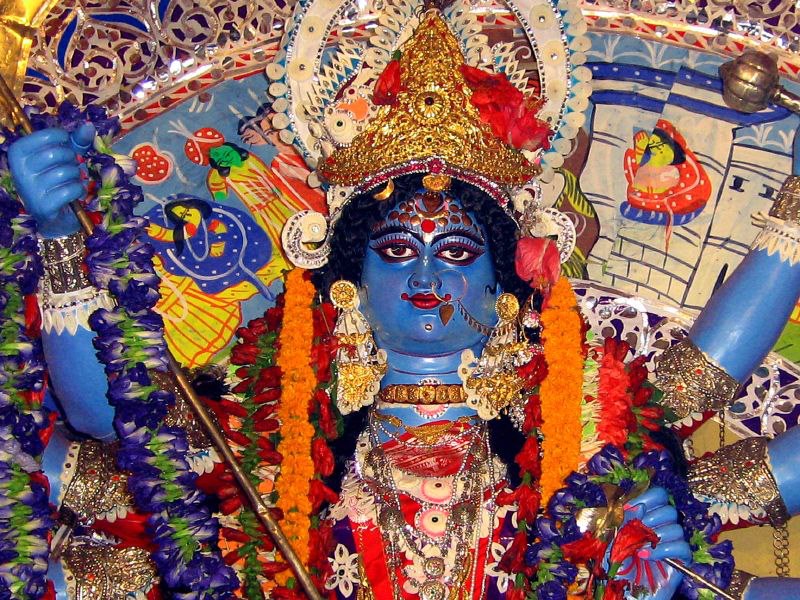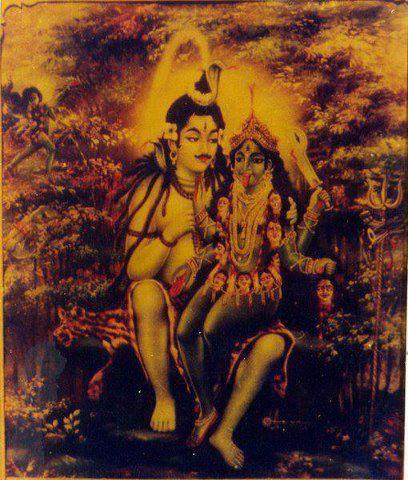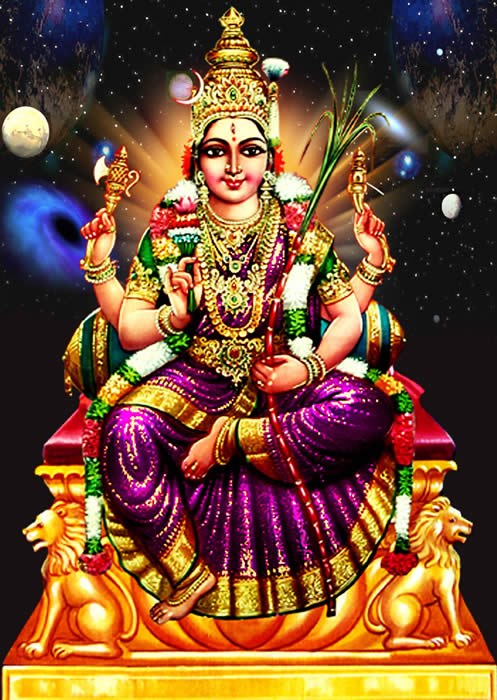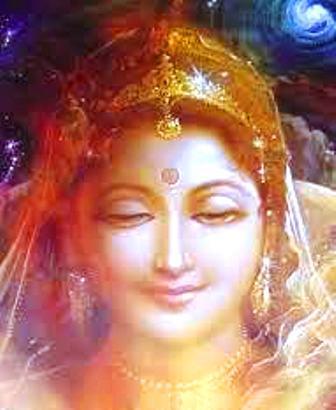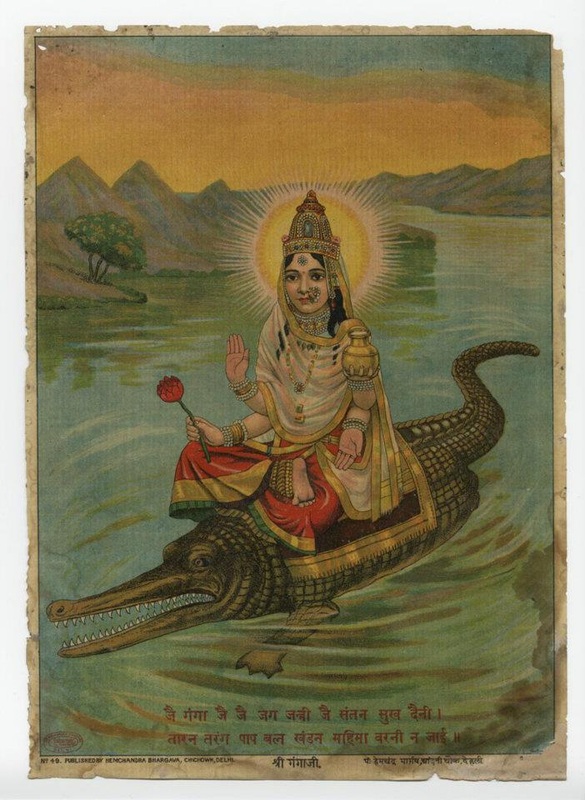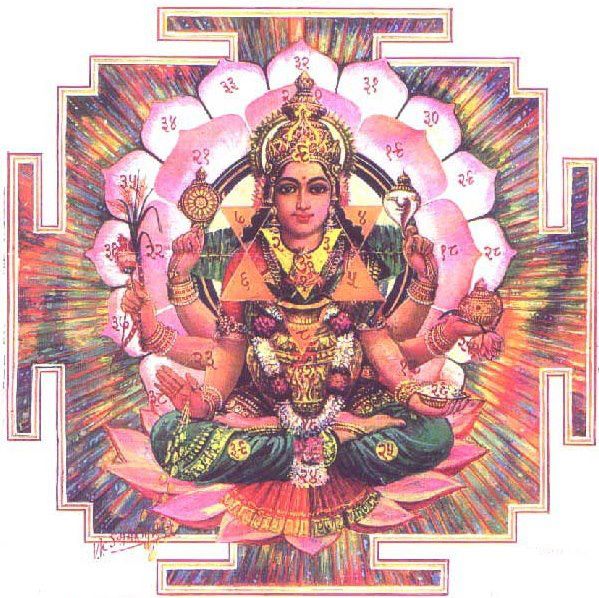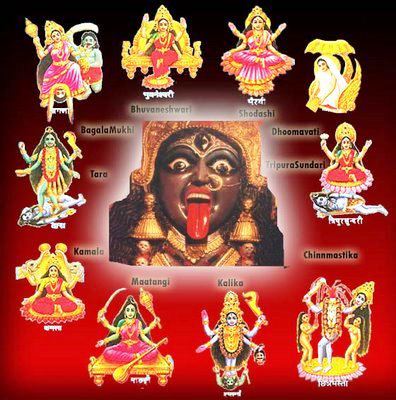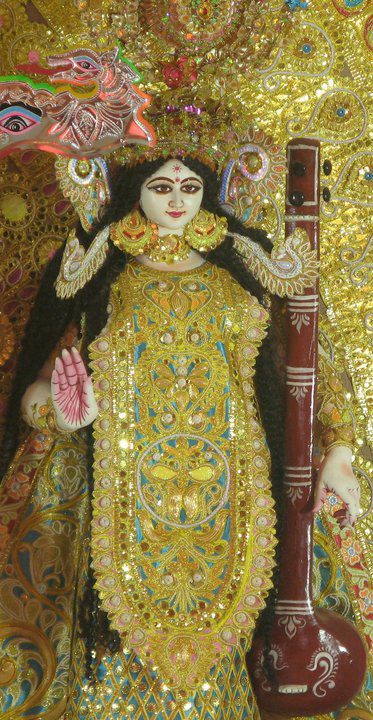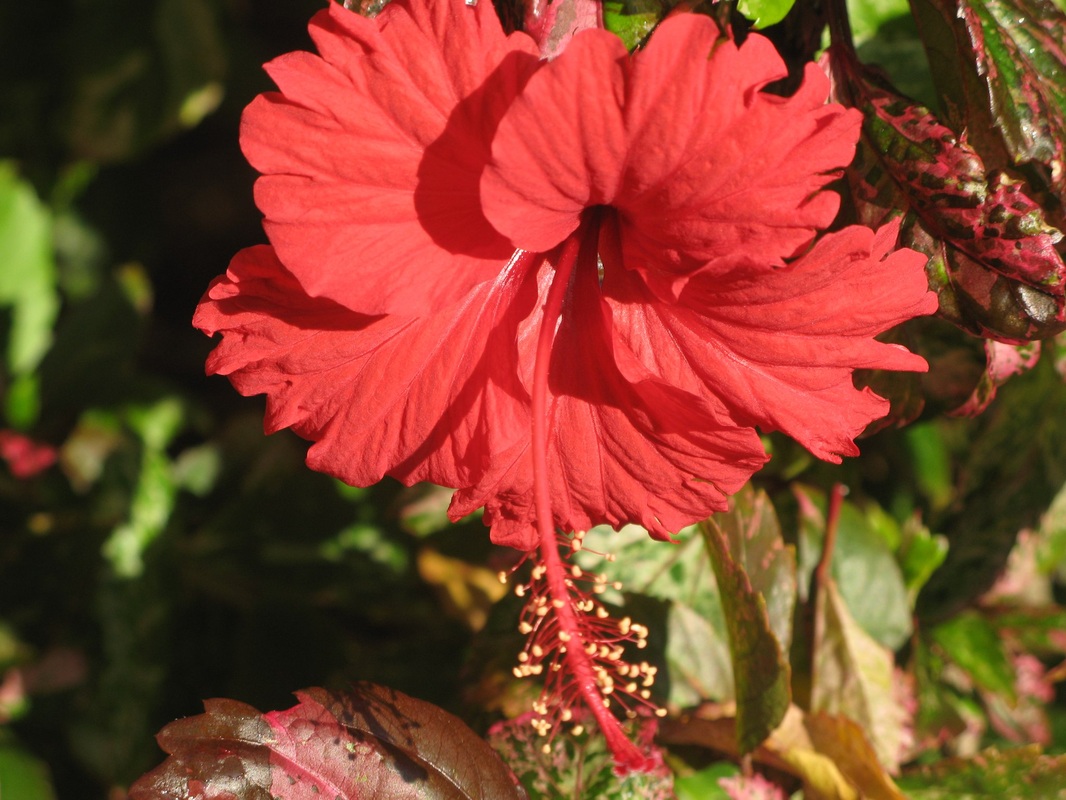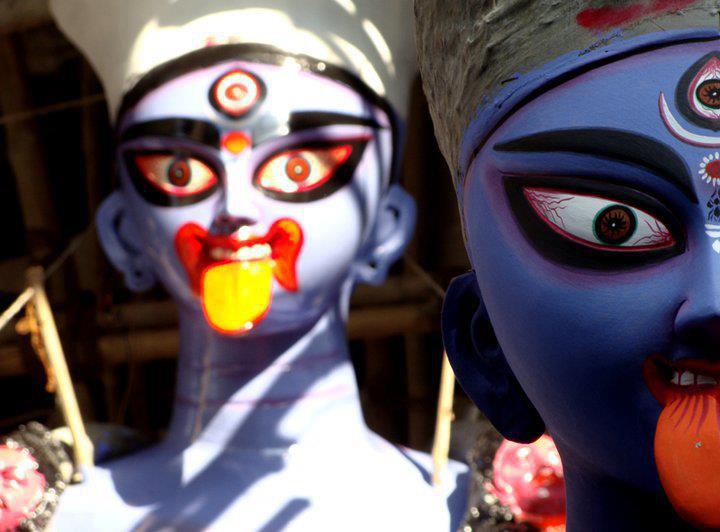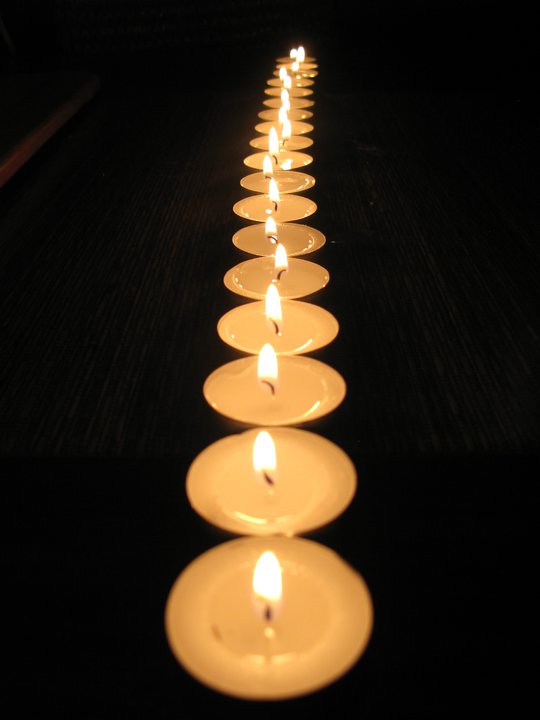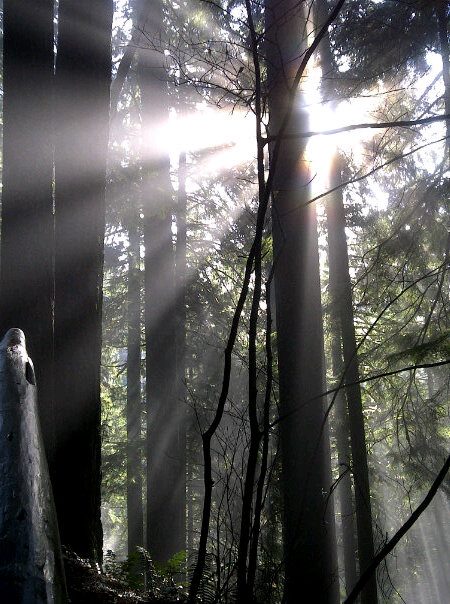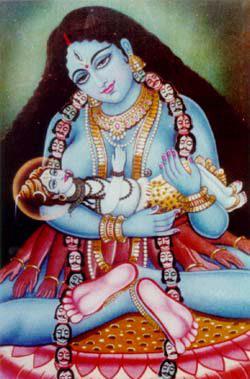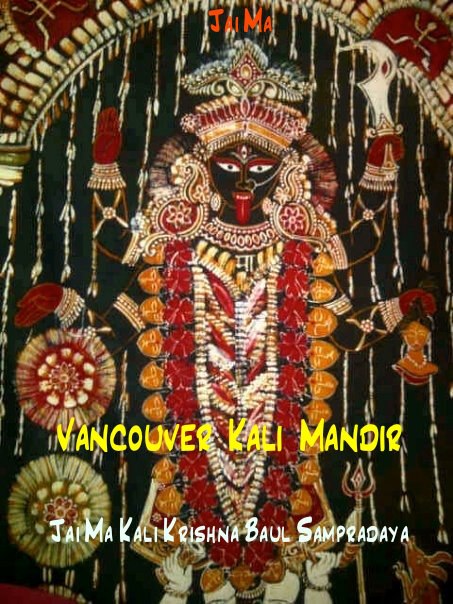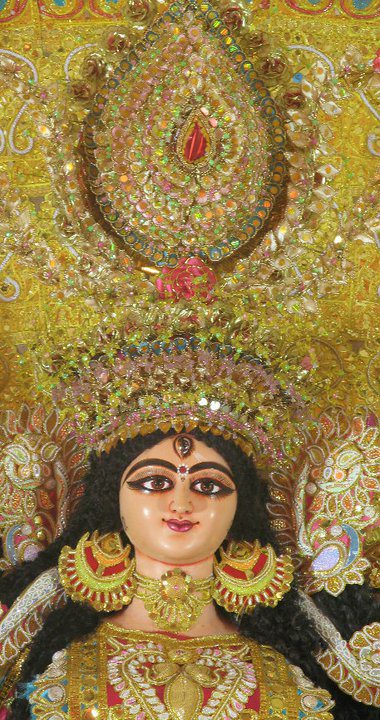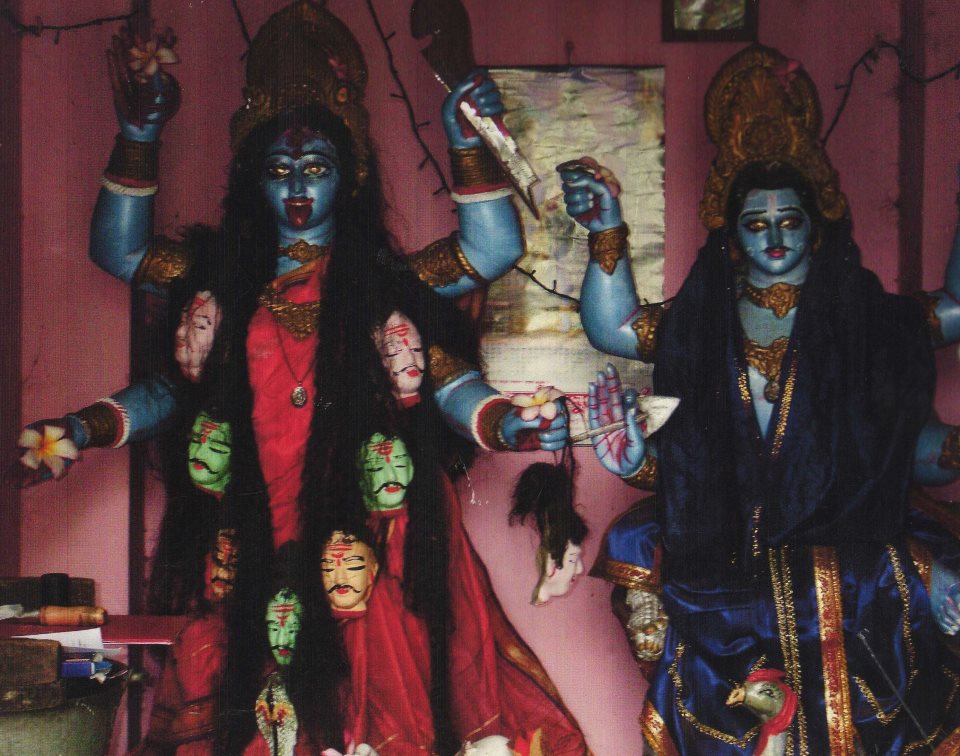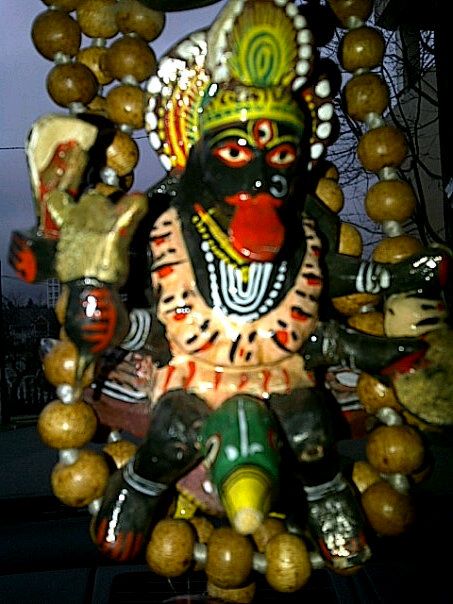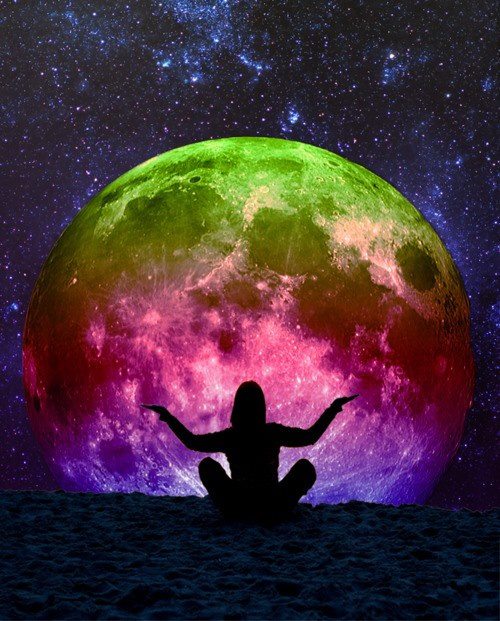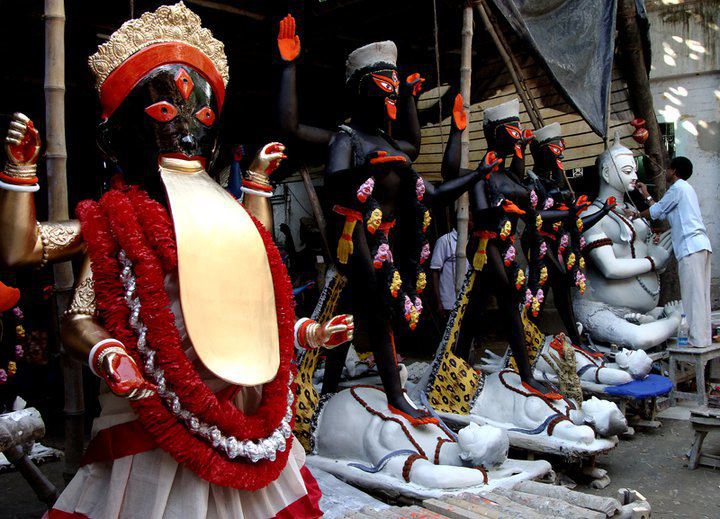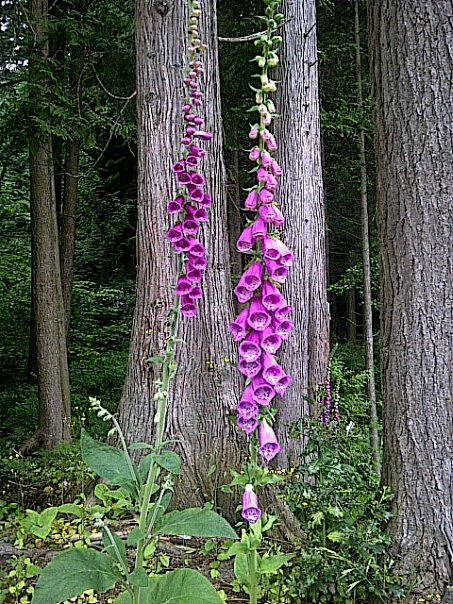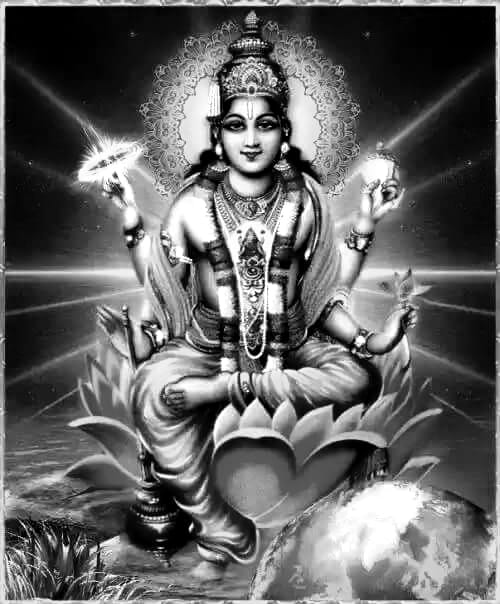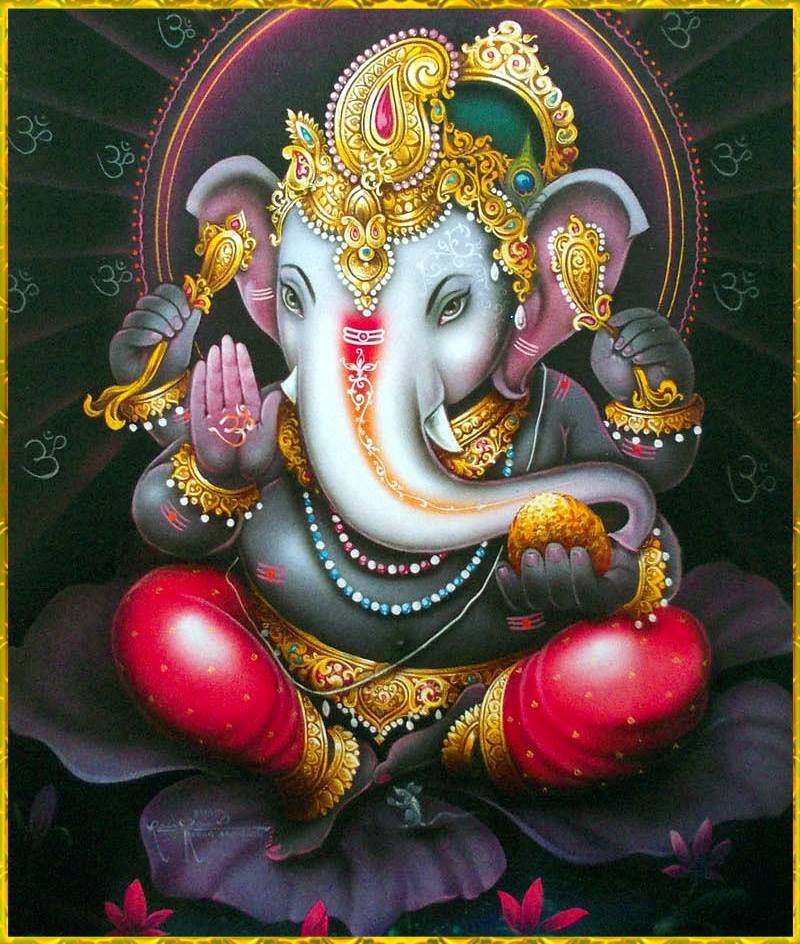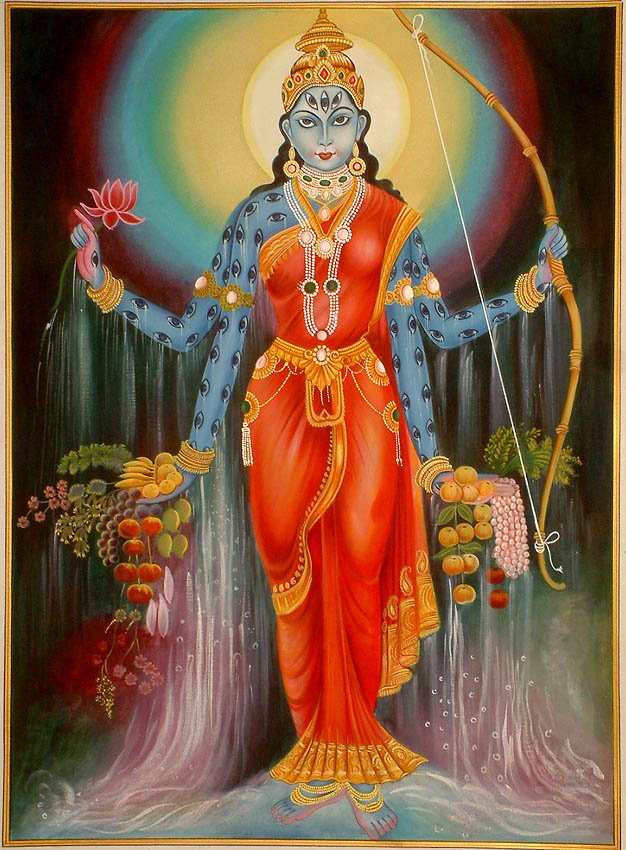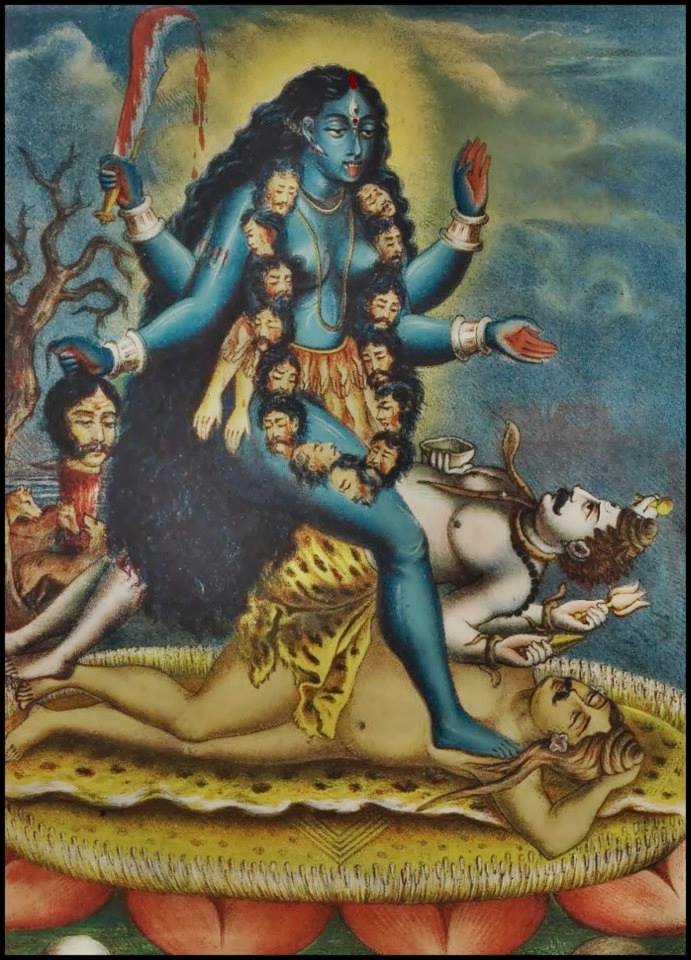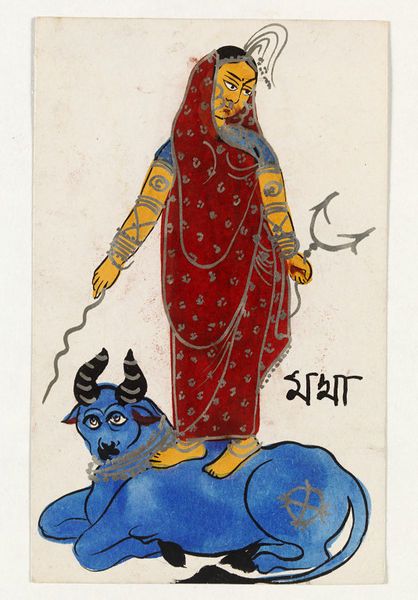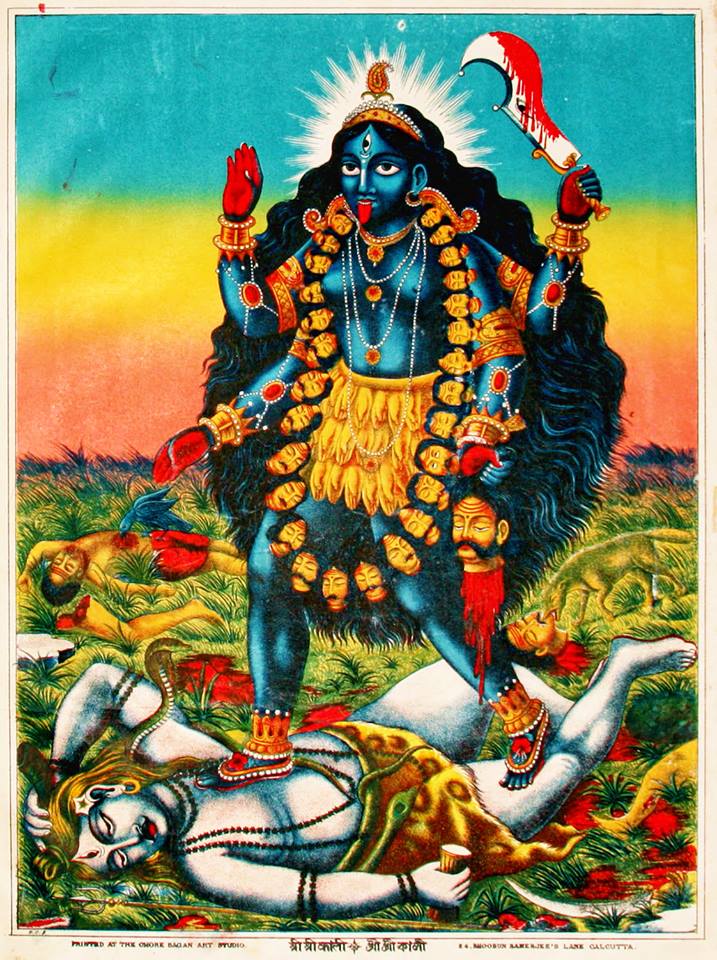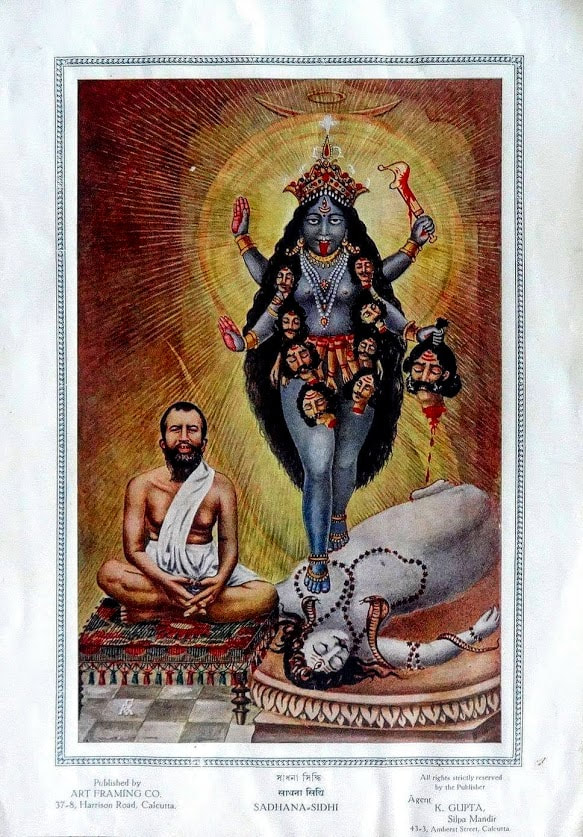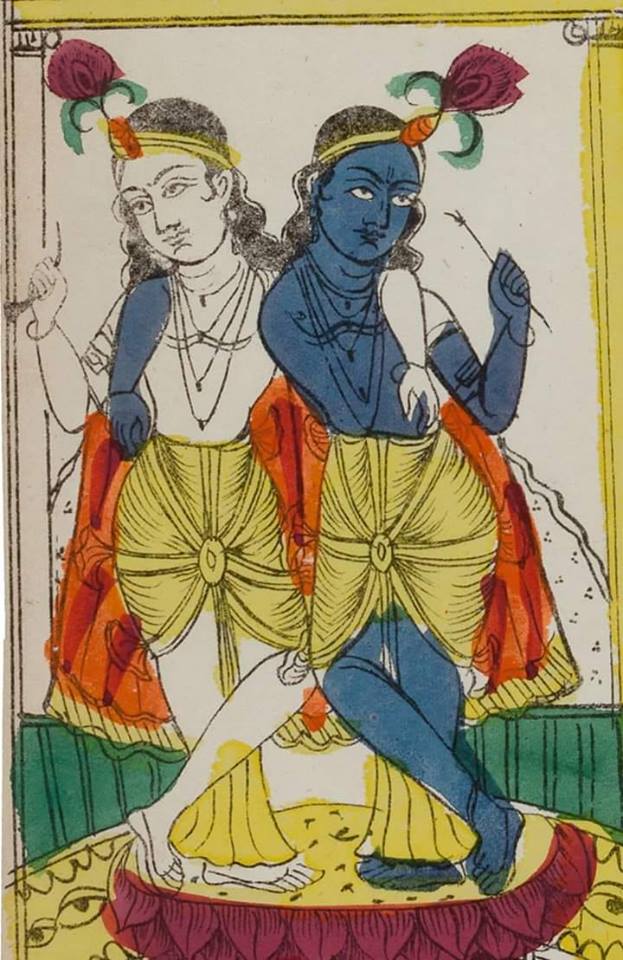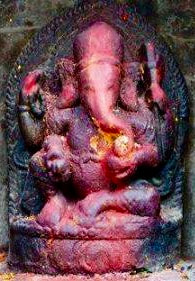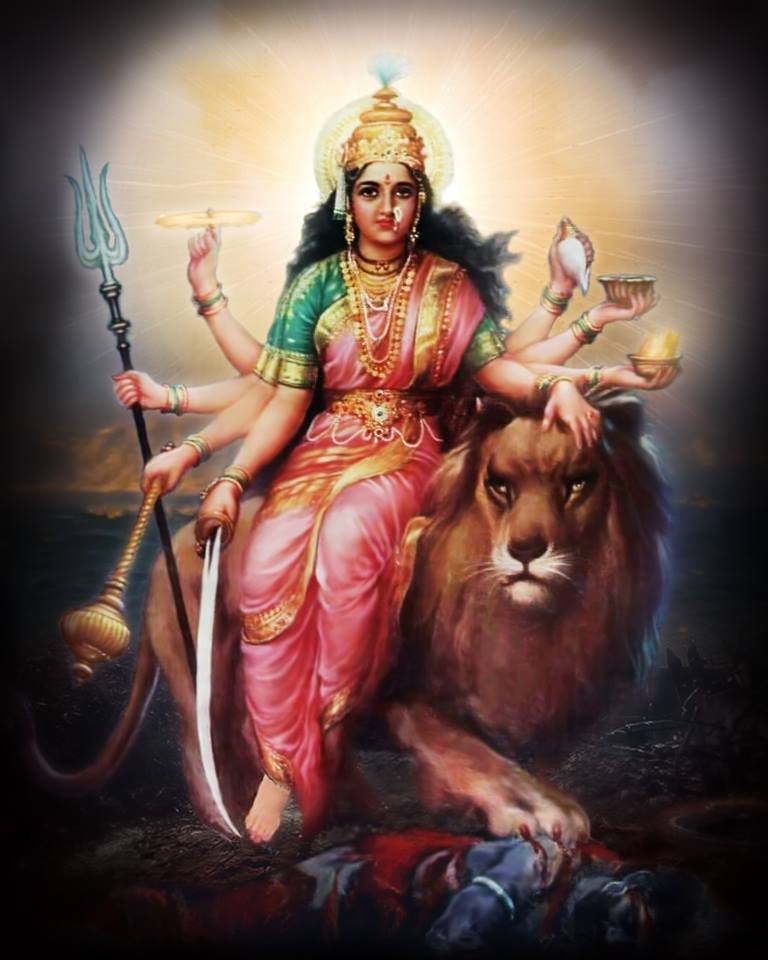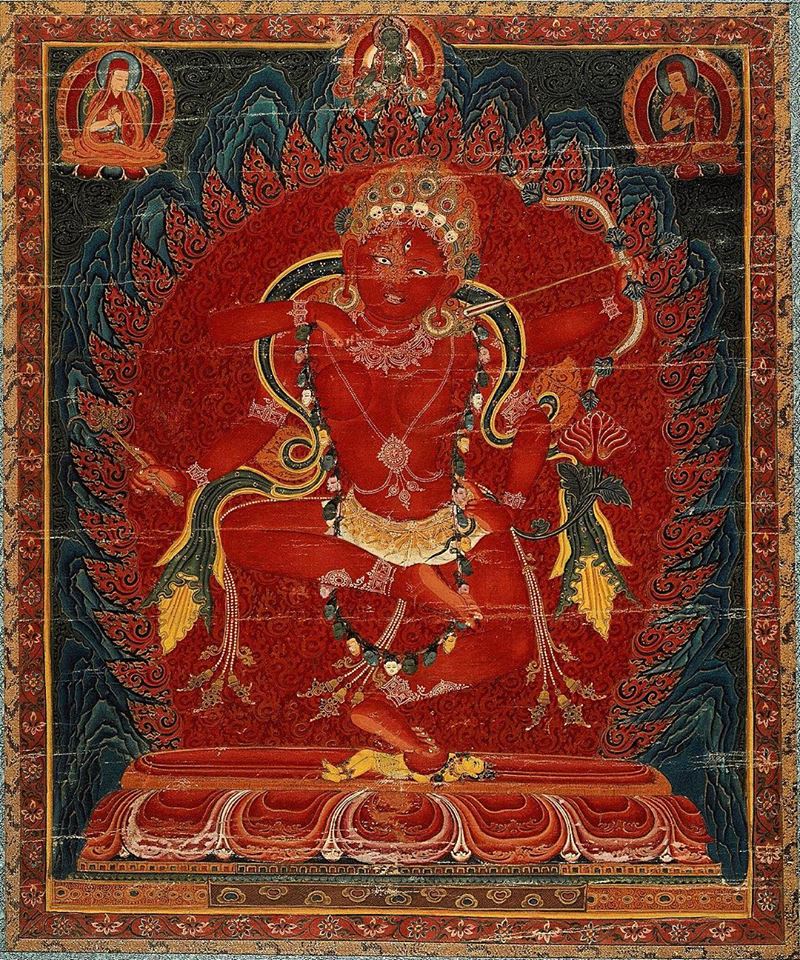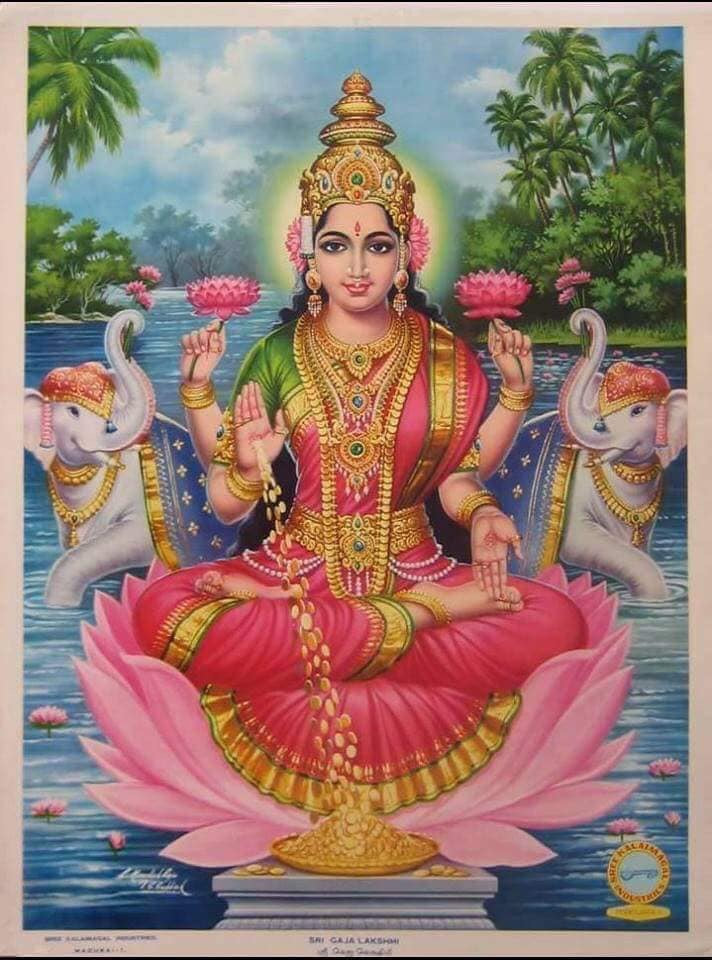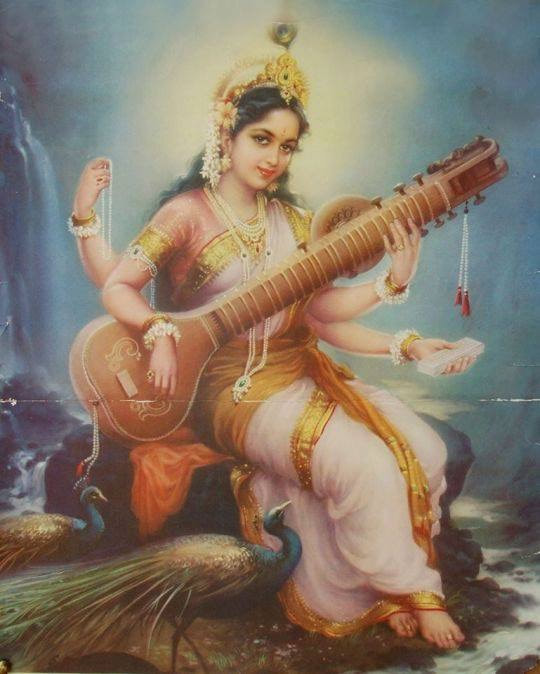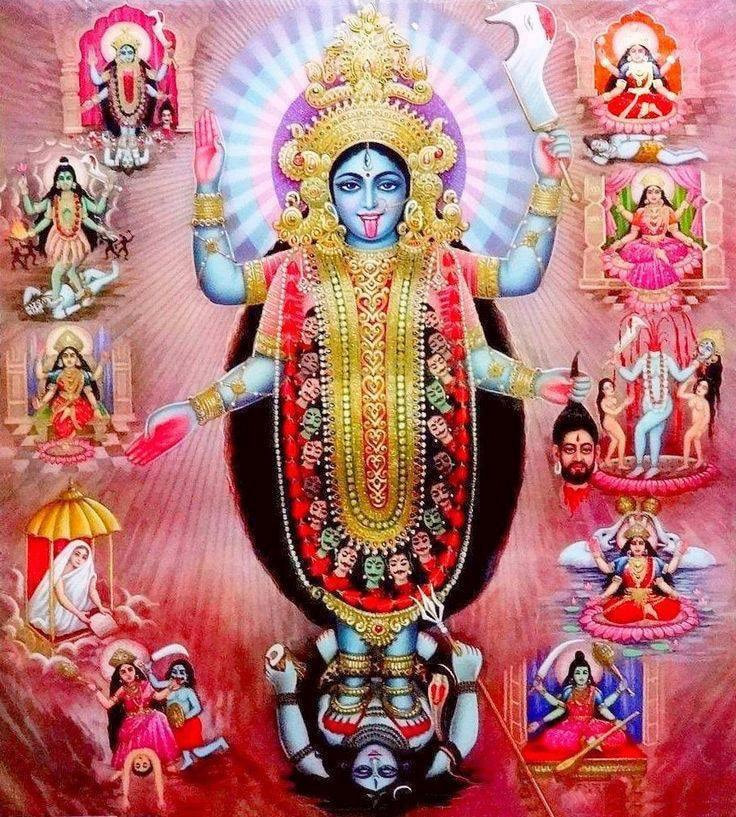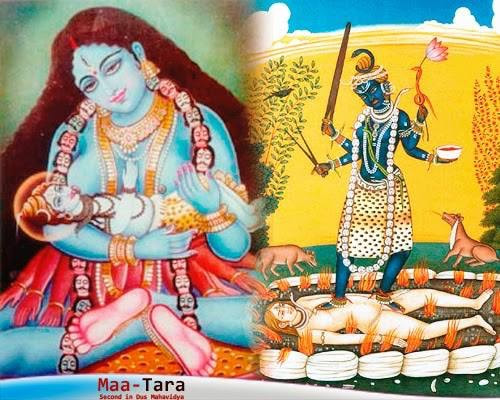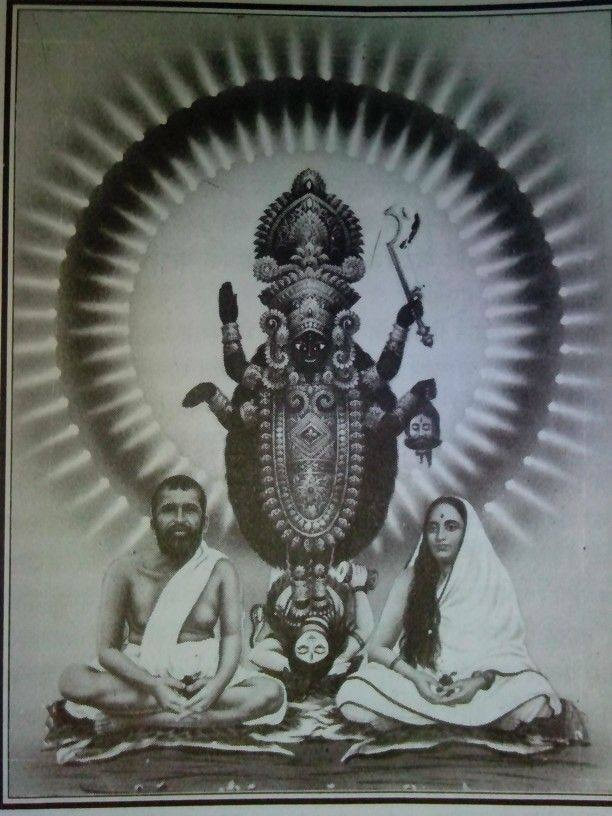The orthodox laws of this nation forbid killing of a brahmana , a woman and a cow. Capital punishment was not applicable to a brahmin because back in those times a brahmin was a teacher philosopher who guided and educated the society. In today's context it would be equivalent of awarding capital punishment to a intellectual thinker of the society.
Hastings had a personal grudge against Nandakumar and had him fabricated in a false court case which was being adjudicated by his own friend Sir Elijah Impey. Nandakumar was hung in public at khidirpore in Calcutta . Indians were outraged at Brahma hatya and resentment against company rule continued right upto the revolt of 1857.
Nandakumar, like many other royals of his time was deeply religious and is said to have discovered the image of guhya Kaali buried in earth through a miraculous divine intervention. He had her installed in a temple in Akalipur village.
Fables say that when maharajah Nandakumar was hung, a thunderbolt struck down on the temple causing it to crack .
This is perhaps the only existing image of Guhya Kali.
Thanks to Halley Goswami
Kundalini aspects of Parvati differ according to each of her manifestations. Durga is a fierce form Mother Parvati and she goes on to manifest as the more fierce and terrible Kali.
She is worshiped as Mahakali, Dakshina Kalika, Shmashanakali, Bhadrakali, Kamakali, and Guhyakali, amongst many others.
Kashmir Shaivism identifies twelve forms, whereas Southern Shaivism has innumerable variations.
Mother Guhya Kali is not the same as the Shmashan Kali form of Parvati.
Guhya Kali, meaning Secret Kali, manifests in eight different forms, with eight different mantras, worshipped by eight great seers.
These forms of Kali appear with 100, 60, 36, 20, 10, 5, 3, 2 and a single face.
In Kali Yuga, the 16-lettered mantra for the ten-faced form of Guhya Kali consists of fifty-four hands.
She was worshipped by Bharata, Sri Rama’s brother.
In his then circumstances, Bharata dedicated his sadhana to Guhya Kali.
Rama is said to have prayed to Guhya Kali with a vidya of seventeen letters. These vidyas are held to be secret. Unlike Dakshina Kali, Guhya Kali represents both Srsti and Samhara equally.
While tantric practice of Guhya Kali remains and is to remain secretive unless instructed by a tantric guru and strict observance of tantric mandates, brief description can be made of this Mother and tantric literature.
These are found in Guhyakalika, Secret Kali Kanda of Mahakala Samhita.
MAHAKALASAMHITA:
This is in the form of a discourse in which Mahakala responds to questions posed by his spouse Mahakali. His answers gives us a picture of Guhya Kali shred in mysery and utmost secrecy. Mahakala commences the kanda by his willingness to reveal meditation forms being dhyana and rules for Guhya Kali worship. He also reveals eighteen mantras and yantras.
FORMS:
Guhyakali, he says, has forms with 100, 60, 36, 30, 20, 10, five, three, two and one faces. Different mantras correspond to these different forms, which he then reveals, using the usual codes for the different letters of the Sanskrit alphabet employed in other tantras.
SIMHASANA:
Mahakala commences the discourse if Guhyakali in simhasana, on her lion. She gives the dikpala or guardians of the directions to the five great corpses of Shiva on which she sits.
BHAIRAVA:
He is the sixth pitha, described as black complexioned with four arms. Bhairava appears terrifying and he is the cause of fear. He is five faced, each with three eyes. There is a khatvanga staf and scissors in his hands. He also holds a skull and damaru. Garland of skulls adorn the fanged Bhairava.
He is on an eight petalled lotus. Four petals of the major directions symbolize dharma, jnana, vairagya and aishvarya. Varigya is dispassion and aishvarya means dominion. Shiva, above Bhairava is clothed in tiger skin. He is two-armed and holds a skull-staff and a trishula.
TEN FACED FORM:
Mahakala then describes the twenty-seven eyed, ten-faced form of Guhyakali and her animal aspects represented by each of her faces. Dvipika: a leopard or possibly a panther; Keshari: a white lion; Pheru: black jackal; Vanara: red moneky; Riksha: purple bear; Nara: cochineal colored woman; tawny Garuda; Makara: turmeric color crocodile; Gaja: gold color elephant; Haya: dark or shyama color horse.
HUMAN FACE:
Jagadambika, Mother of the Universe has a terrible lolling blood dripping tongue. Her laughter is sharp and shrieking. Both her garlands and earrings are skulls. She has fifty-four arms. In Her right hands she has rosary, scissors, goad, a rock, a danda, a jeweled pot, a trishula, five and arrows, a discuss, a bamboo stave, a fire hearth, a barbed hook, a man’s skeleton, young corpse and threatening mudra. She holds a bhindipala- a sling and shataghni- club studded with metal nails.
TRIPURASUNDARI:
Guhyakali is the darker form of Mother Tripura. She has three major forms corresponding to creation, maintenance and destruction. Thus Guhya Kali is the sum total of Mahavidya tantric practice.
SHAMSHAN:
Guhyakali dwells within the centre of eight cremation grounds. These shmashans are:
Mahaghora,
Kaladanda,
Jvalakula,
Chandapasha,
Kapalika,
Dhuma kula,
Bhimangara, and
Bhutanatha.
WORSHIP:
Her worship honours the Vetalas or vampires, eight tridents, vajras, jackals and corpses, Bhairavas, dakinis, Chamundas, Kshetrapalas, Ganapatis and other denizens of the cremation ground.
YANTRA:
Mahakala instructs eighteen yantras. Her one letter mantra is ‘Phrem’. The first Yantra consists of a bindu, a triangle, a hexagon, a pentagon, a circle, 16 petals, eight petals and four doors, adorned with tridents and skulls.
SHRIKANTA:
Shiva known as Shrikantha ‘the one with the beautiful throat’. Shiva and Shakti are in Kamakala or gods in copulation. Shakti in her Guhyakali form, has worked her kundalini upwards Shiva’s spine. This energetic depiction represents Shiva’s form dancing in ecstasy as he copulates with his consort Guhyakali. This also seems to be the Buddhist version except that the art form differs here and there.
In this depiction, Shiva’s bull and Shakti’s lion are found by their sides to identify them as Shiva and Shakti. Shiva is dancing in the pratyalidha pose, trampling on two demons lying beneath his foot.
He holds his primary hands in varahamudra and abhamudra, his remaining eight hands radiating around him and holding attributes including a trishul, triatna, danda, mala and pushtaka. Devi is depicted with twelve arms and six heads, her left leg wrapped around Shiva’s waist, and her right foot trampling on a demon or lesser god, who is lying on her vehicle the lion. She holds a kapala, ghanta, capa, kartika, sara and trishula.
RITUALS:
Would not be discussed here. If interest prevails, please take it up with a tantric guru in person.
Thanks to Mike Magee - I can now see much of the above was copied from your web site ??
Shri Guhyakali DeviHa-Sa is the pathway breath takes in living creatures. This mantra exists in the form of exhalation and inhalation, dearest one. Just as clouds cannot exist without wind, and just as the sky is without limit, so the world cannot exist except by (this) Shri Paraprasada mantra. The world of immovable and moving things comes from the Shri Paraprasada mantra - Kularnavatantra III
The Devi Kali has many forms. Kashmir Shaivism speaks of twelve Kalis, while in other parts of India she is and was worshipped as Mahakali, Dakshina Kalika, Shmashanakali, Bhadrakali, Kamakali, and Guhyakali, amongst many others.
The Guhyakalika section (khanda) of Mahakalasamhita is a voluminous work, comprising many thousands of shlokas (verses) and with Guhyakalika (Secret Kalika) as its focus. But the work also covers a number of other tantrik topics in equally great detail, and along the way also includes subjects rarely referred to in other published tantras.
The work follows the usual tantrik formula, with Mahakala answering questions posed to him by his spouse, Kali.
Mahakala opens the Guhyakali section of the Mahakalasamhita by saying he will reveal the mantra, yantras, meditation forms (dhyanaand rules of worship relating to Guhyakali, which, he says, have been previously hidden. There are eighteen Guhyakali mantras, he says.
Guhyakali, he says, has forms with 100, 60, 36, 30, 20, 10, five, three, two and one faces. Different mantras correspond to these different forms, which he then reveals, using the usual codes for the different letters of the Sanskrit alphabet employed in other tantras.
Mahakala starts to talk about Guhyakali when she is on her lion seat (simhasana), and gives meditations for the guardians of the directions (dikpala), and the five great corpses, forms of Shiva, upon which she sits. There is a sixth pitha, Bhairava. He is described as black in colour, with four arms, terrifying and the cause of fear. He has five faces, each with three eyes. In his left hands he holds a skull staff khatvanga and scissors, and in his right a skull and the hourglass shaped damaru.
He is adorned with a garland of skulls, and is fanged. Lying, on an eight petalled lotus above Bhairava is a two-armed form of Shiva, clothed in tiger skin and holding a skull-staff and a trident. The four petals of the major directions represent dharma (duty), jnana (knowledge), vairagya (dispassion) and aishvarya (dominion).
The 10-faced form of Guhyakali is then described. She has 27 eyes, with some faces having two, and other three, eyes. Each of her faces represents a different female animal aspect of Guhyakali and is of a different hue. For example, her upper face is called Dvipika (a leopard or possibly a panther), then comes Keshari (a lion) which is white, Pheru ( jackal) which is black, then Vanara (a monkey) which is red, Riksha (a bear) which is purple, Nara (a woman) which is of a cochineal colour, Garuda which tawny, Makara (a crocodile) which is turmeric colour (yellow), Gaja (elephant) which is of a golden colour, and Haya (horse) which is of a dark or dusky (shyama) colour.
The human face is on Guhyakali's shoulders. To the left of that face is the crocodile, above that the horse and above that the bear. To the right of her face is the Garuda, the elephant, and the monkey. On the top of her head is the monkey face, above that the lioness face, and above that the leopardess.
Guhyakali's human face has great, fierce sharp fangs, she laughs very loudly, while streams of blood pour from her mouth. She has a rolling tongue and is adorned with garlands of skulls, with earrings also of skulls. The mother of the universe (jagadambika) has 54 arms each of which holds a weapon. Her right hands hold a jewelled rosary, a skull, a shield, a noose, a shakti missile, a skull-staff, a bhushundi weapon, a bow, a discus, a bell, a young corpse, a mongoose (?), a rock, a man's skeleton, a bamboo stave, a serpent, a plough, a fire hearth, a damaru, an iron mace, a small spear (bhindipala -- it could mean a sling), a hammer, a spear, a barbed hook, a club studded with metal nails (shataghni). Her right hands hold a jewelled rosary, scissors, make the gestures (mudra) of threatening, a goad, a danda, a jewelled pot, a trident, five arrows and so forth.
In the same work there is a nyasa specifically for the 10 faces of this form of the goddess. Here, the faces are related to the 1,000 petalled lotus, the mouth, the right eye, the left eye, the right nostril, the left nostril, the right cheek, the left cheek, the right ear and the left ear.
Guhyakali has three major forms, corresponding to creation, maintenance and destruction, a little like a very much darker form of Tripurasundari.
Chapter five of the Guhyakalikhanda describes 18 yantras of the Devi, corresponding to the 18 separate mantras mentioned earlier.
The first consists of a bindu, a triangle, a hexagon, a pentagon, a circle, 16 petals, eight petals and four doors, adorned with tridents and skulls. This relates to Guhyakali's one letter mantra, which is Phrem (see above left).
Guhyakali dwells within the centre of eight cremation grounds (shmashans), whose names are Mahaghora, Kaladanda, Jvalakula, Chandapasha, Kapalika, Dhumakula, Bhimangara, and Bhutanatha.
Her worship honours the Vetalas (vampires), eight tridents, vajras, jackals and corpses, Bhairavas, dakinis, Chamundas, Kshetrapalas, Ganapatis and other denizens of the cremation ground.
Thanks to Mike Magee
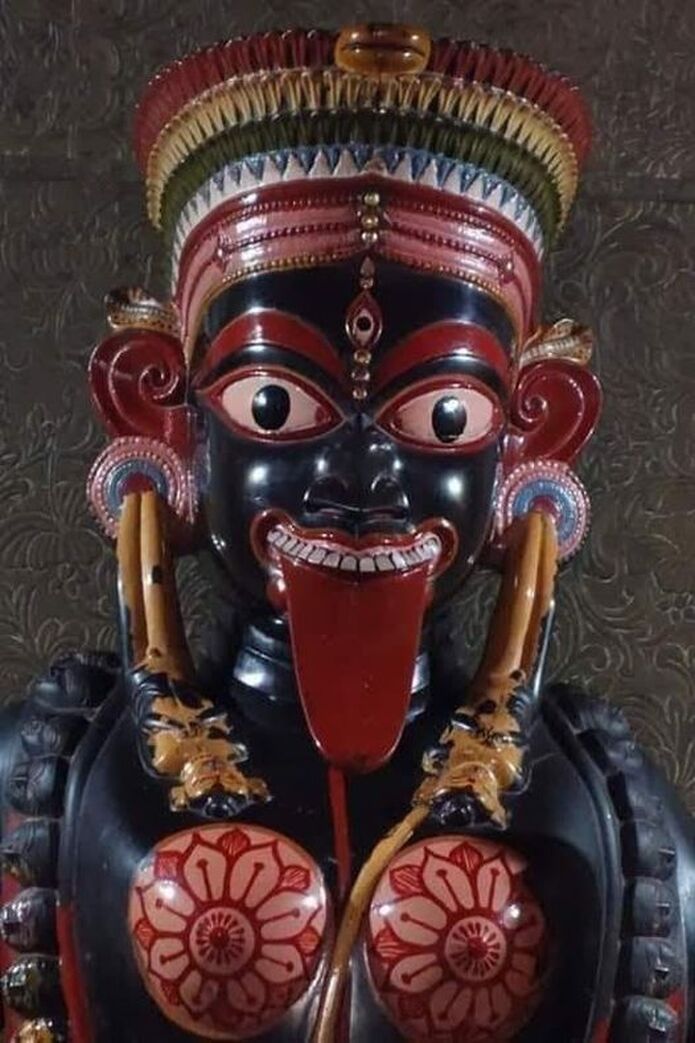
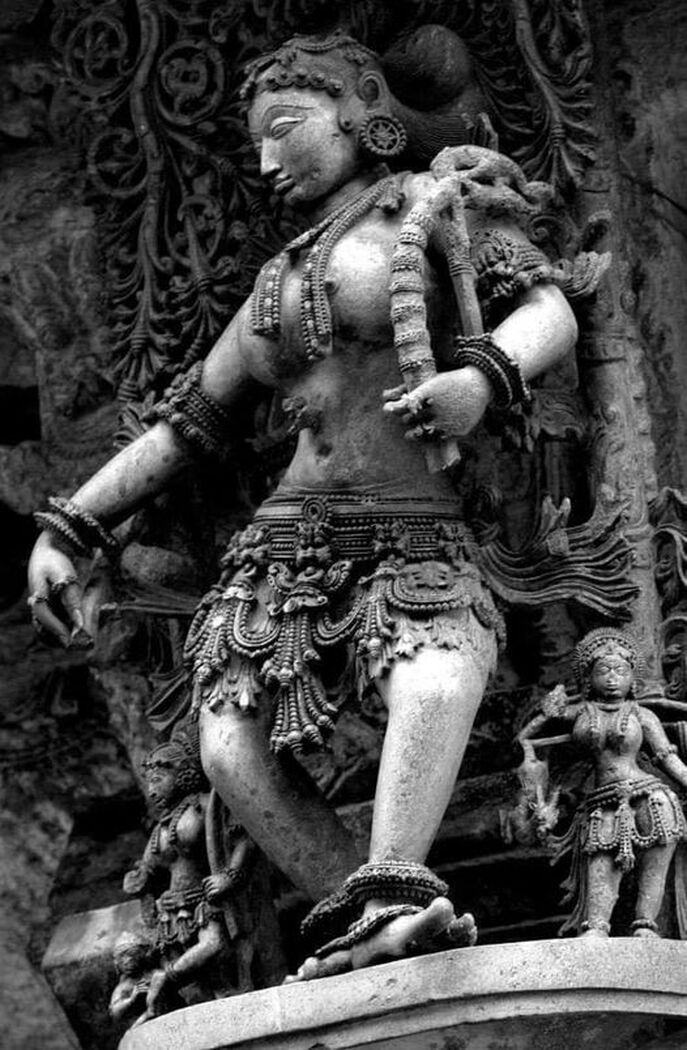
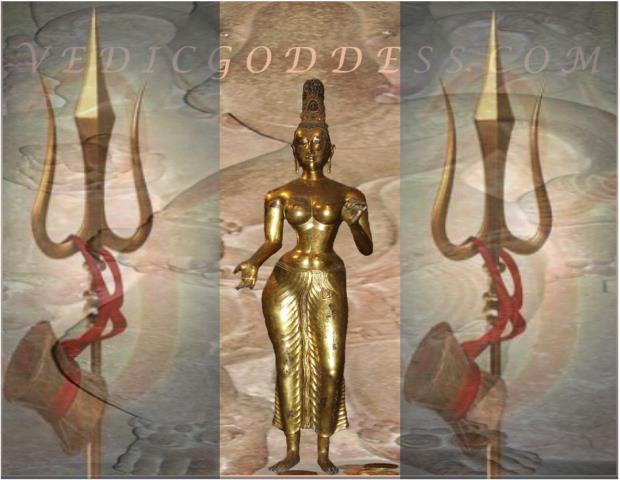
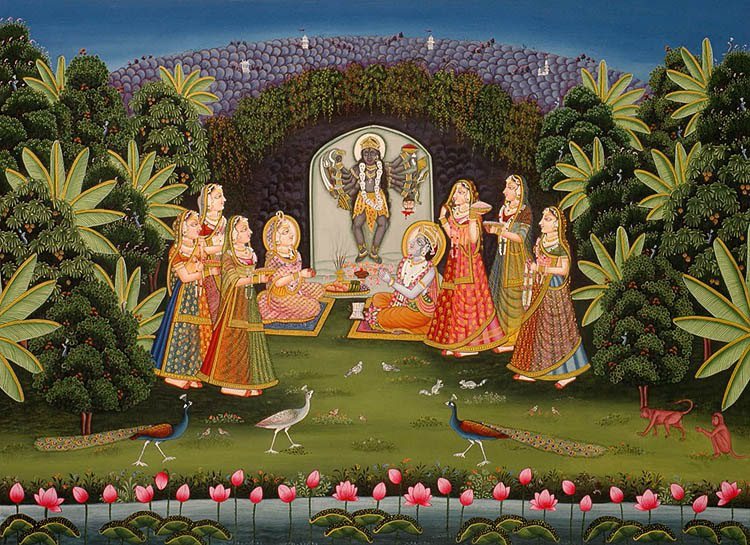
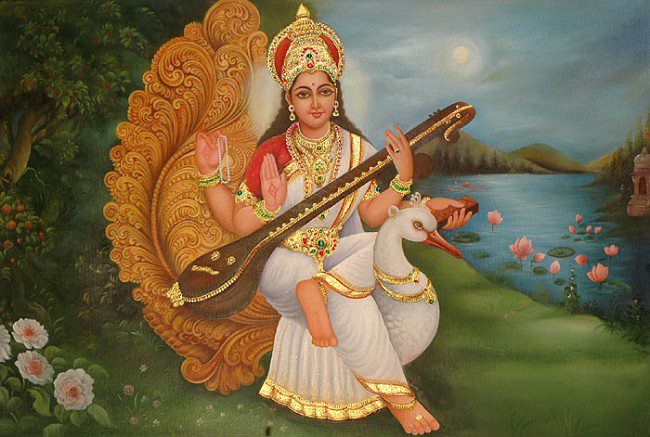
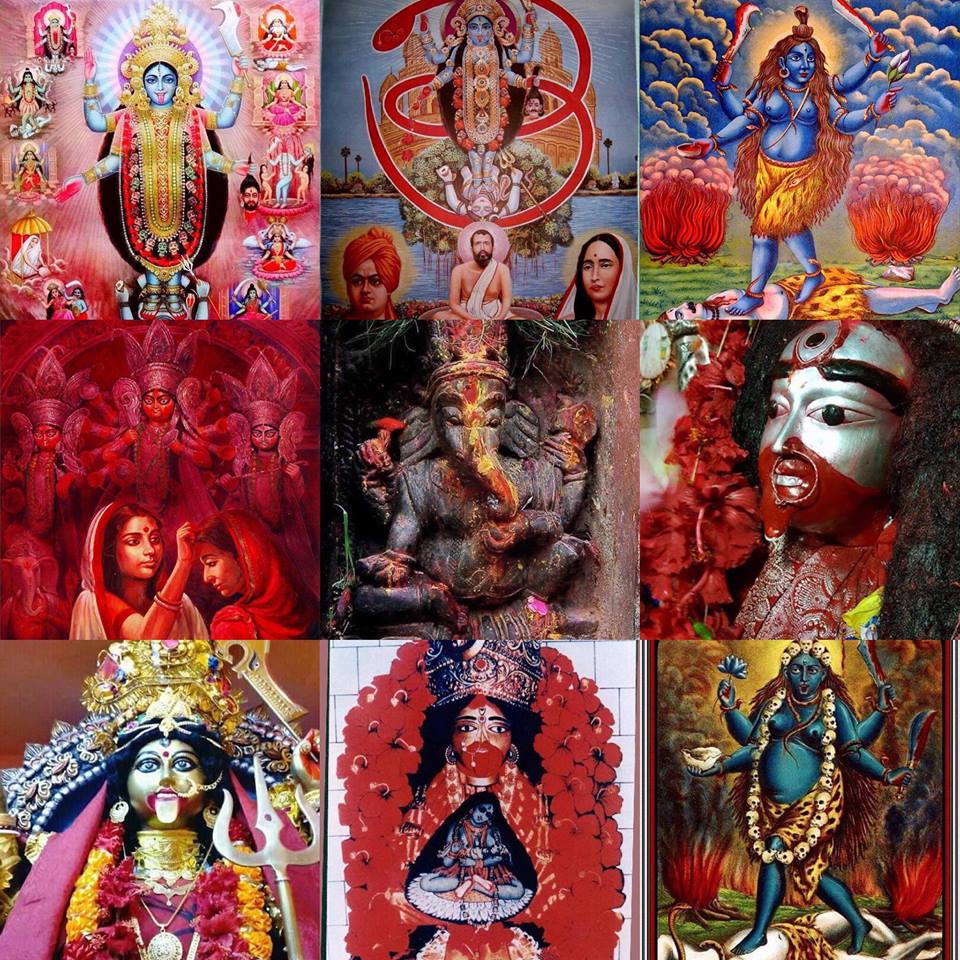
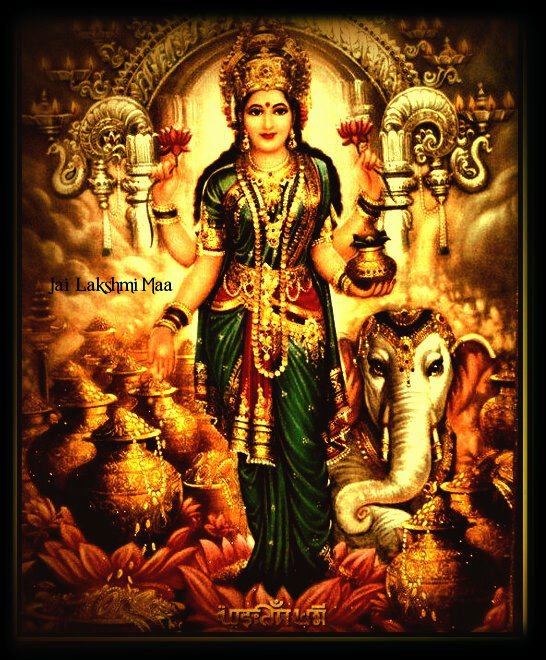
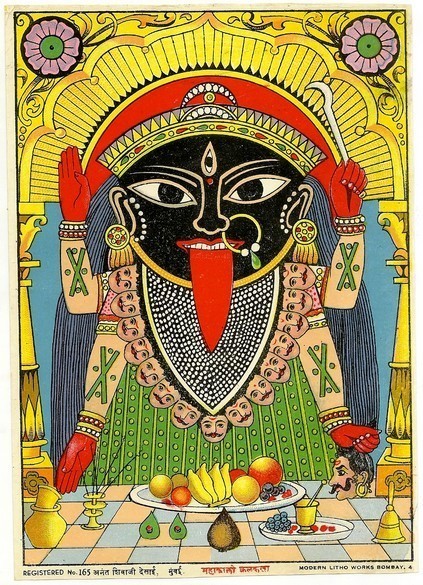
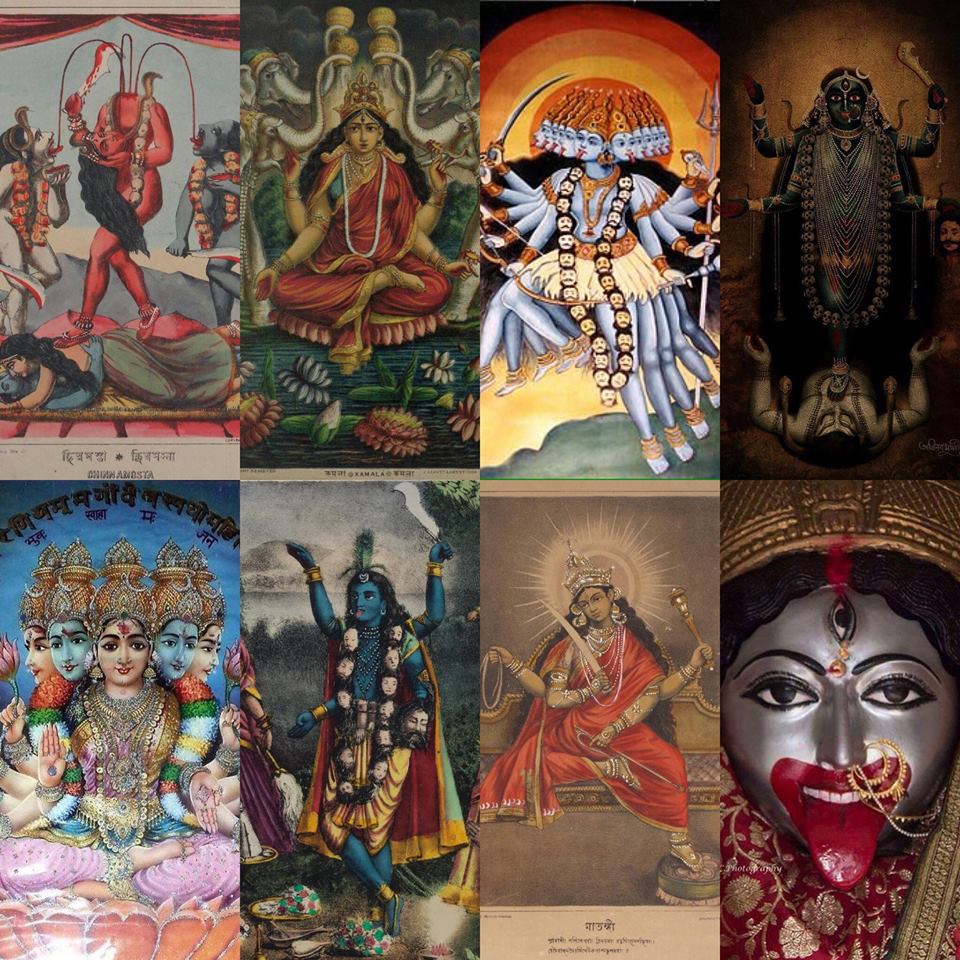
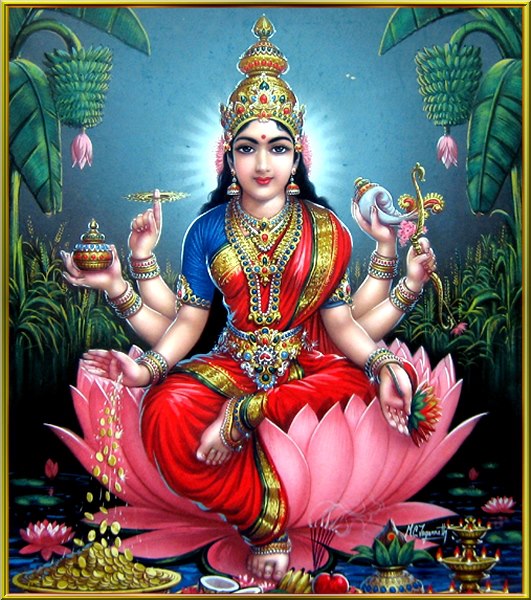
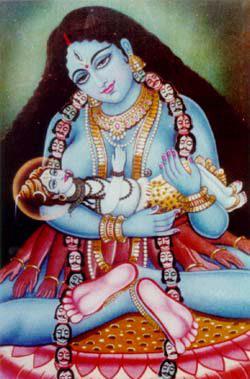
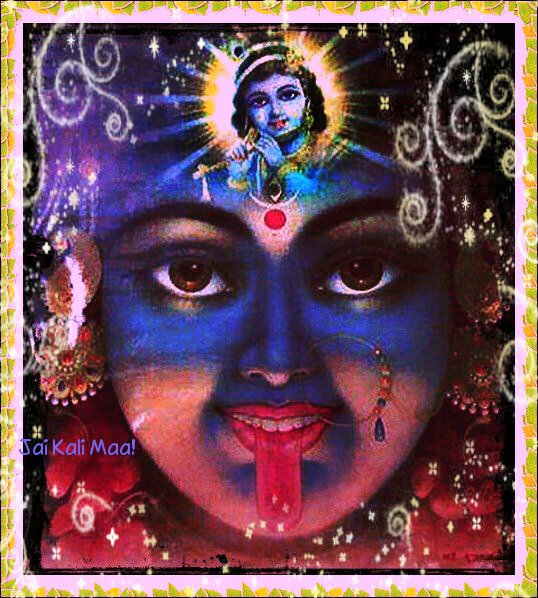
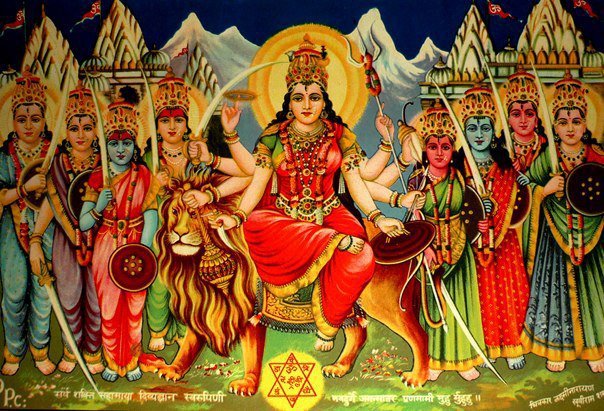
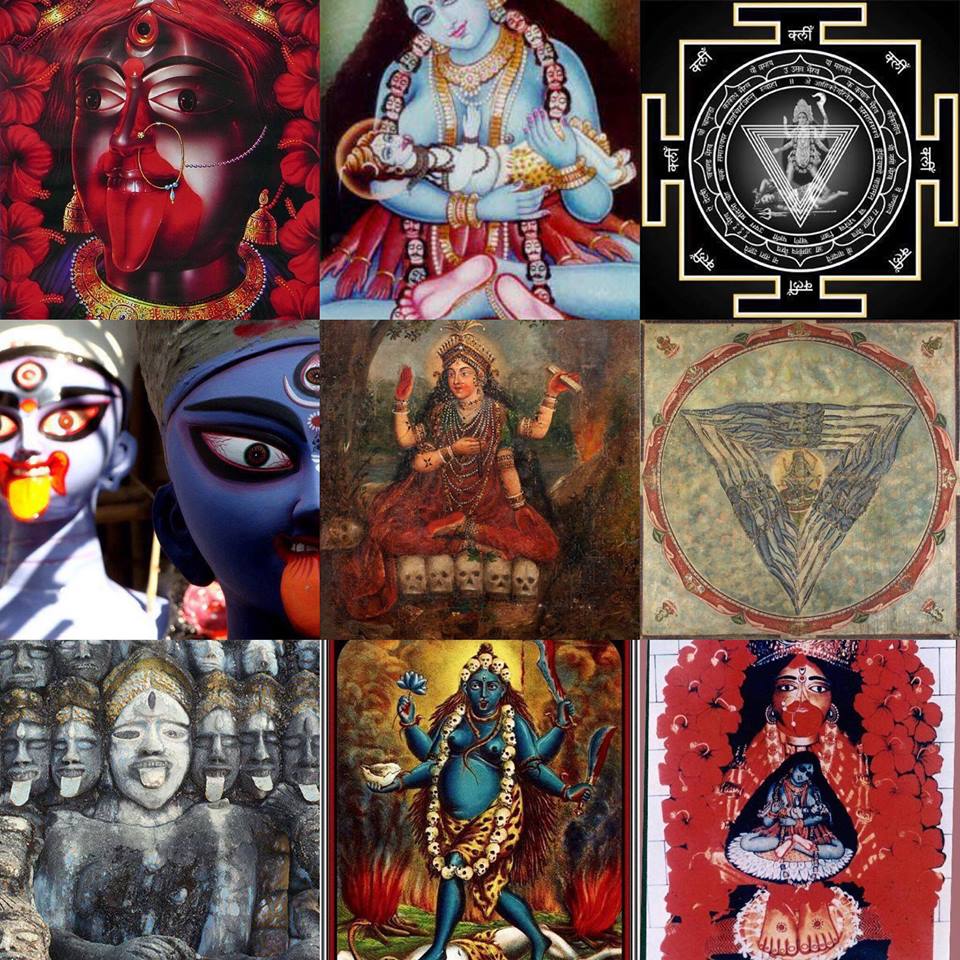
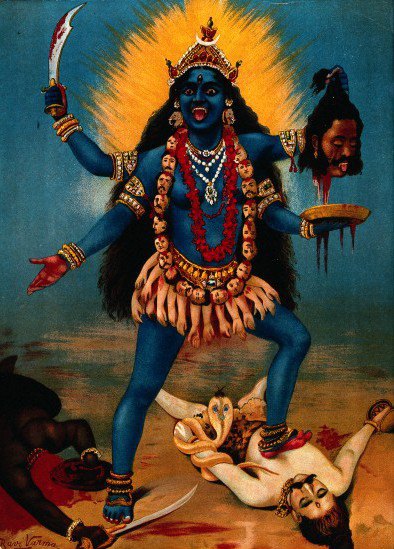
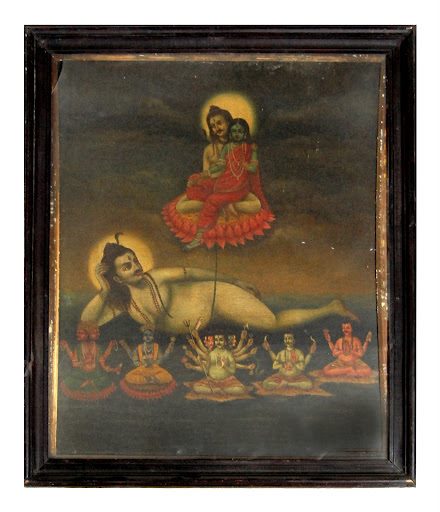
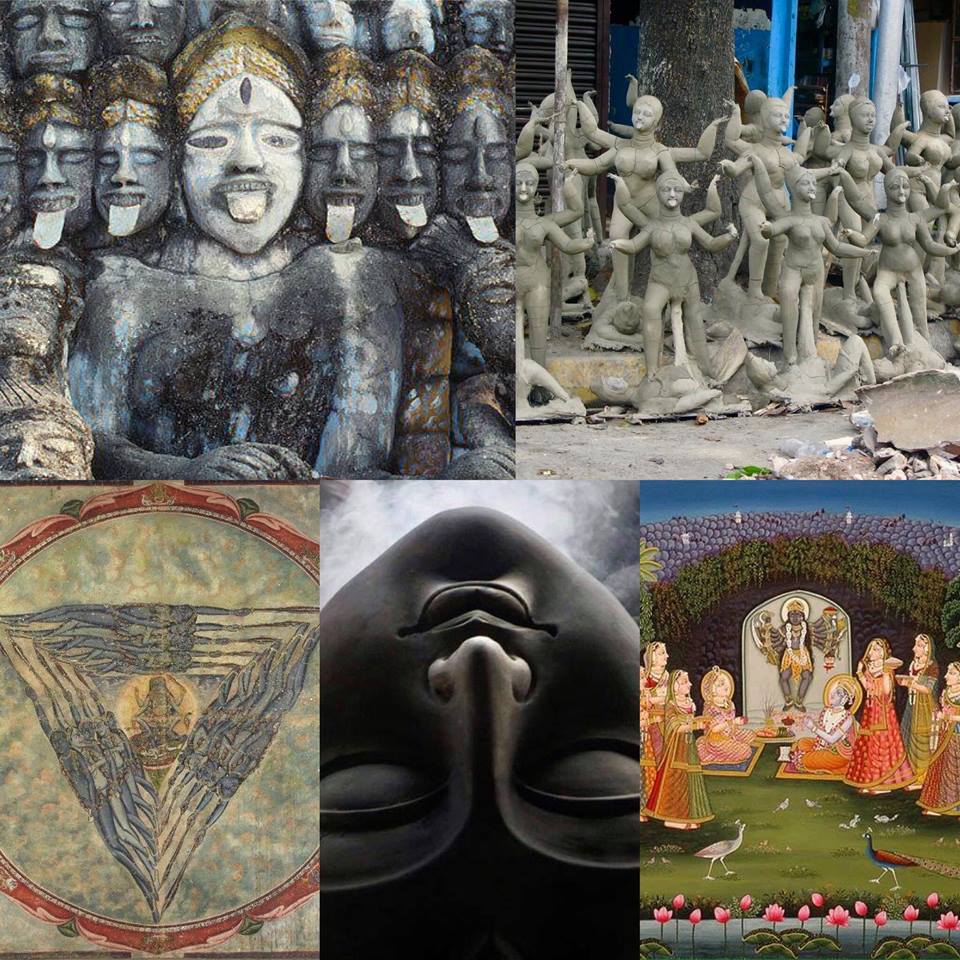
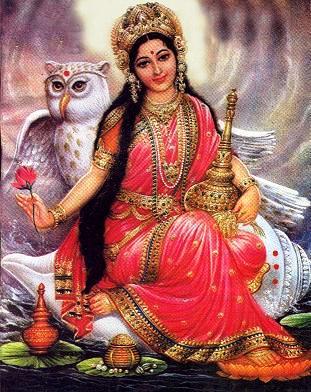
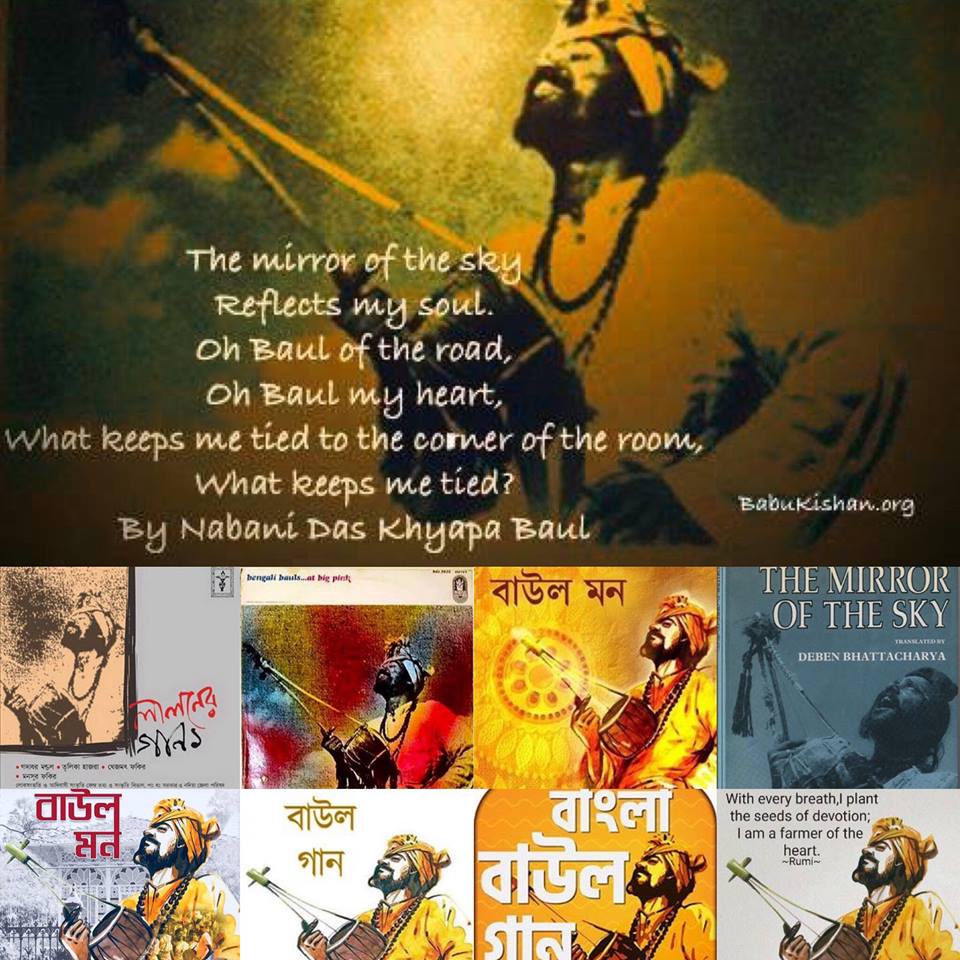
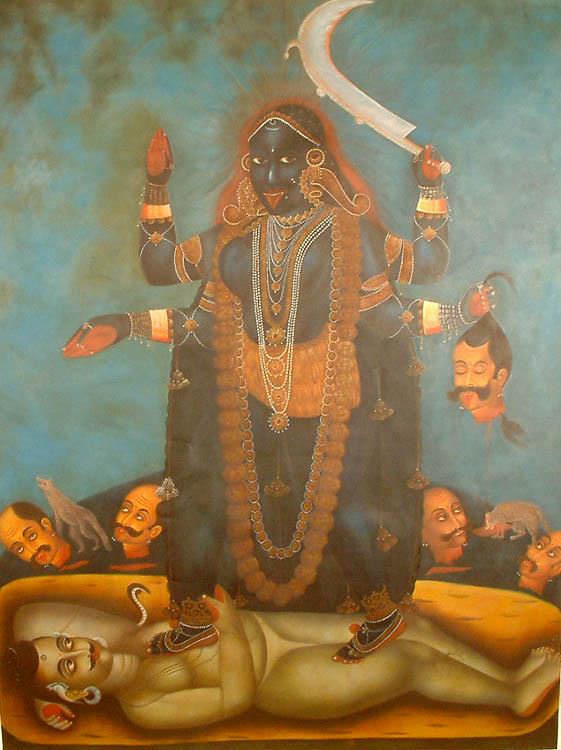
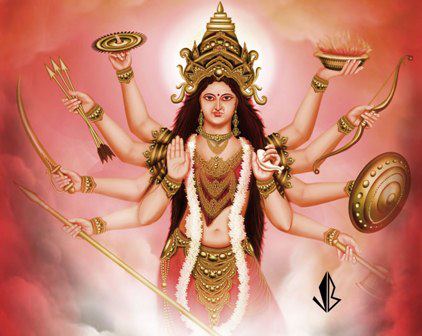
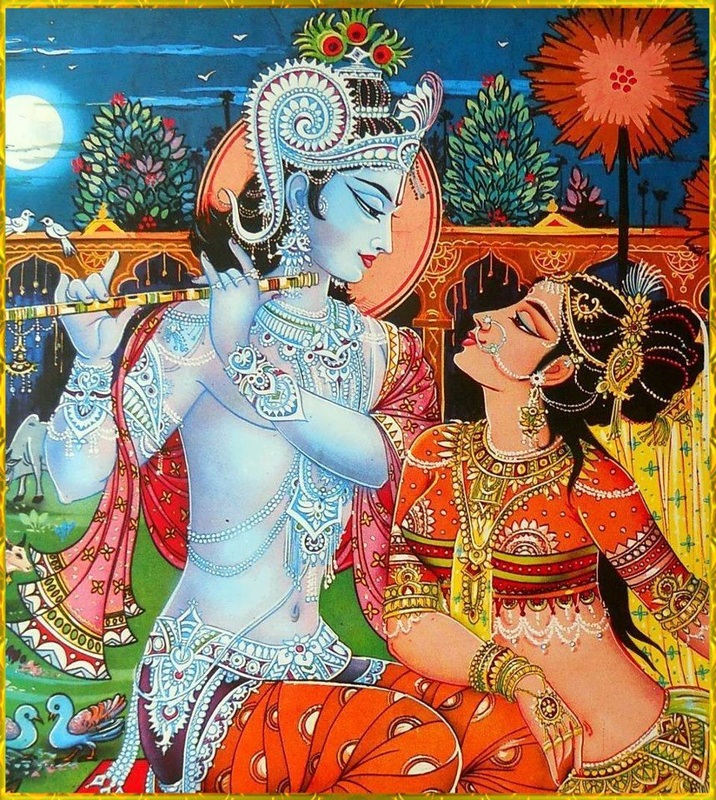
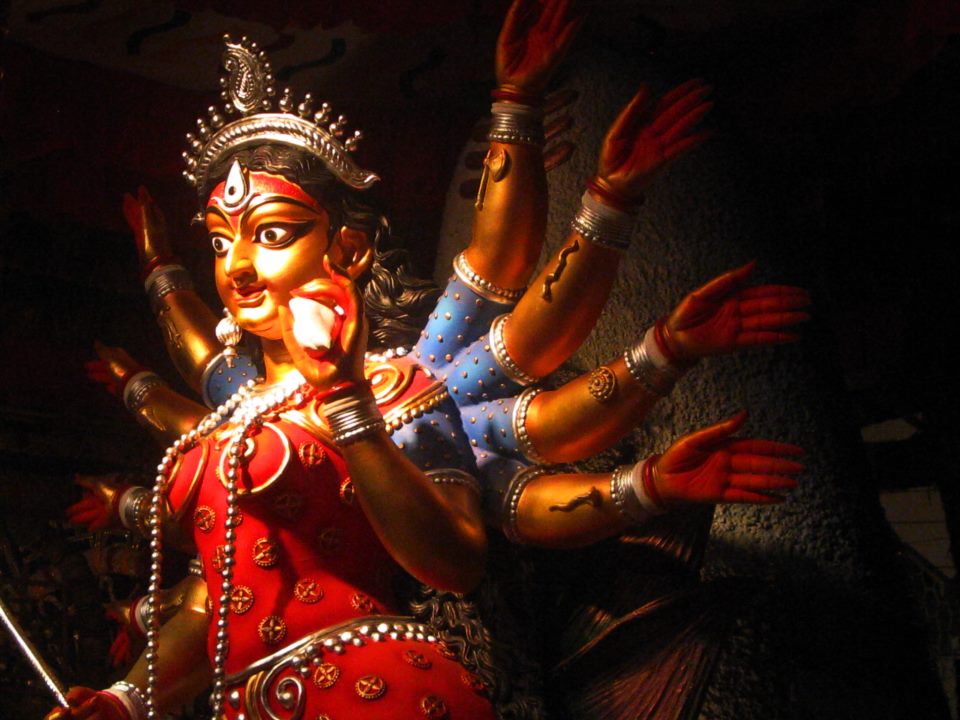
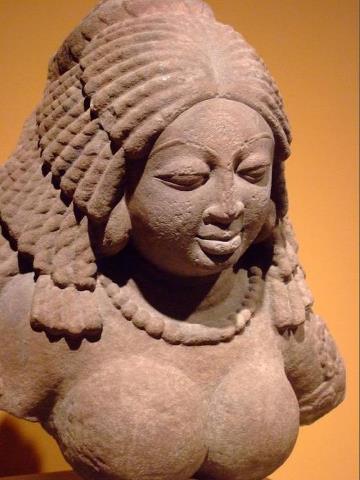
 RSS Feed
RSS Feed
